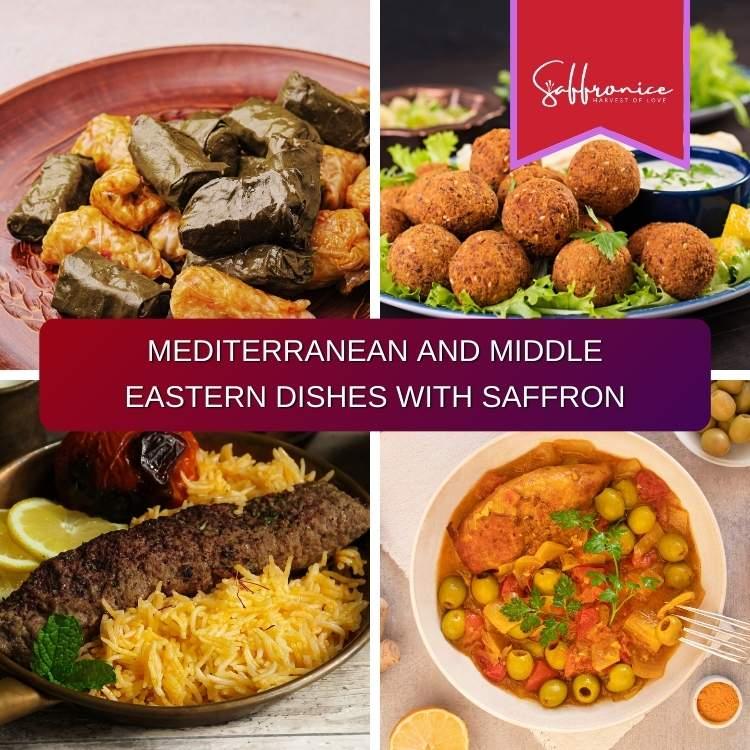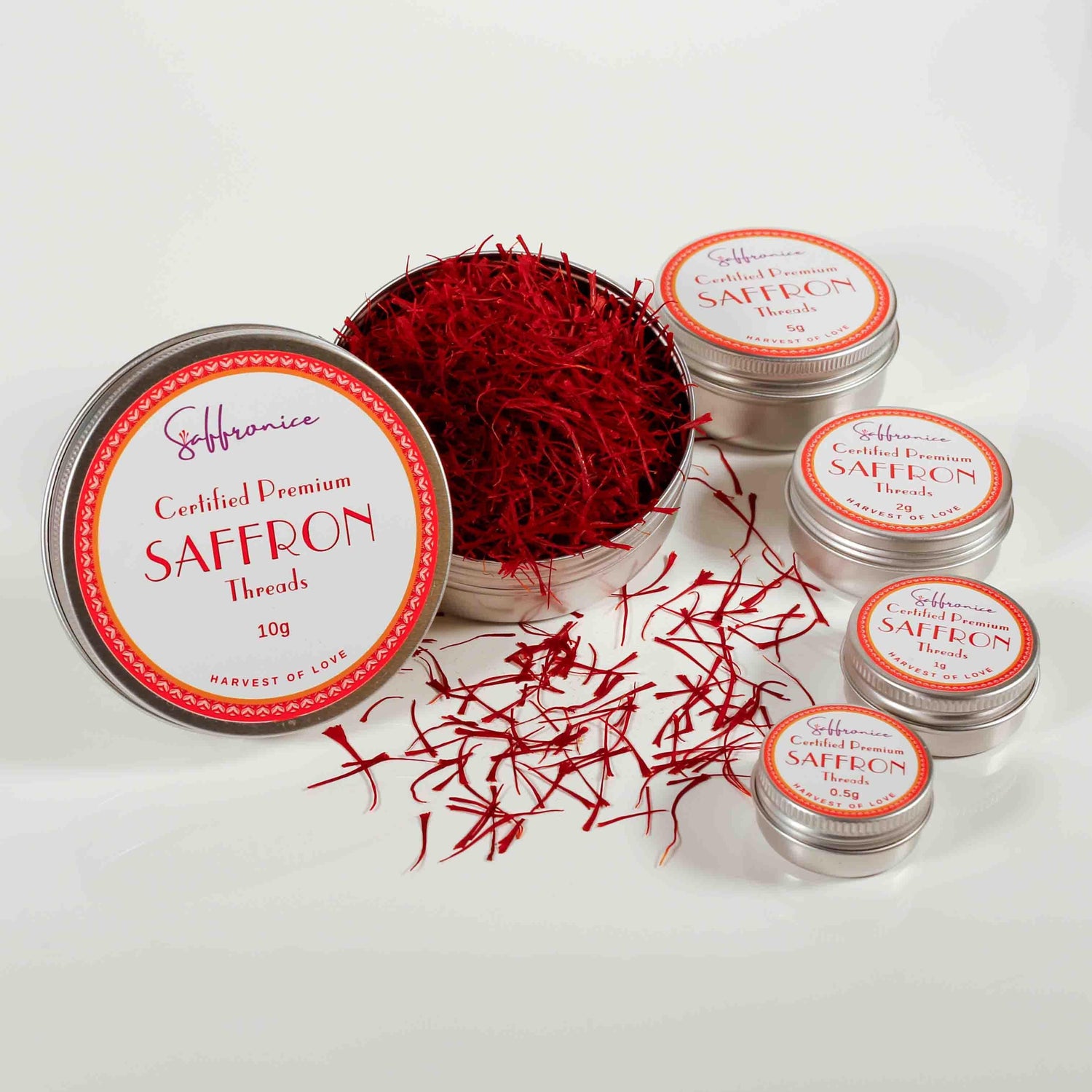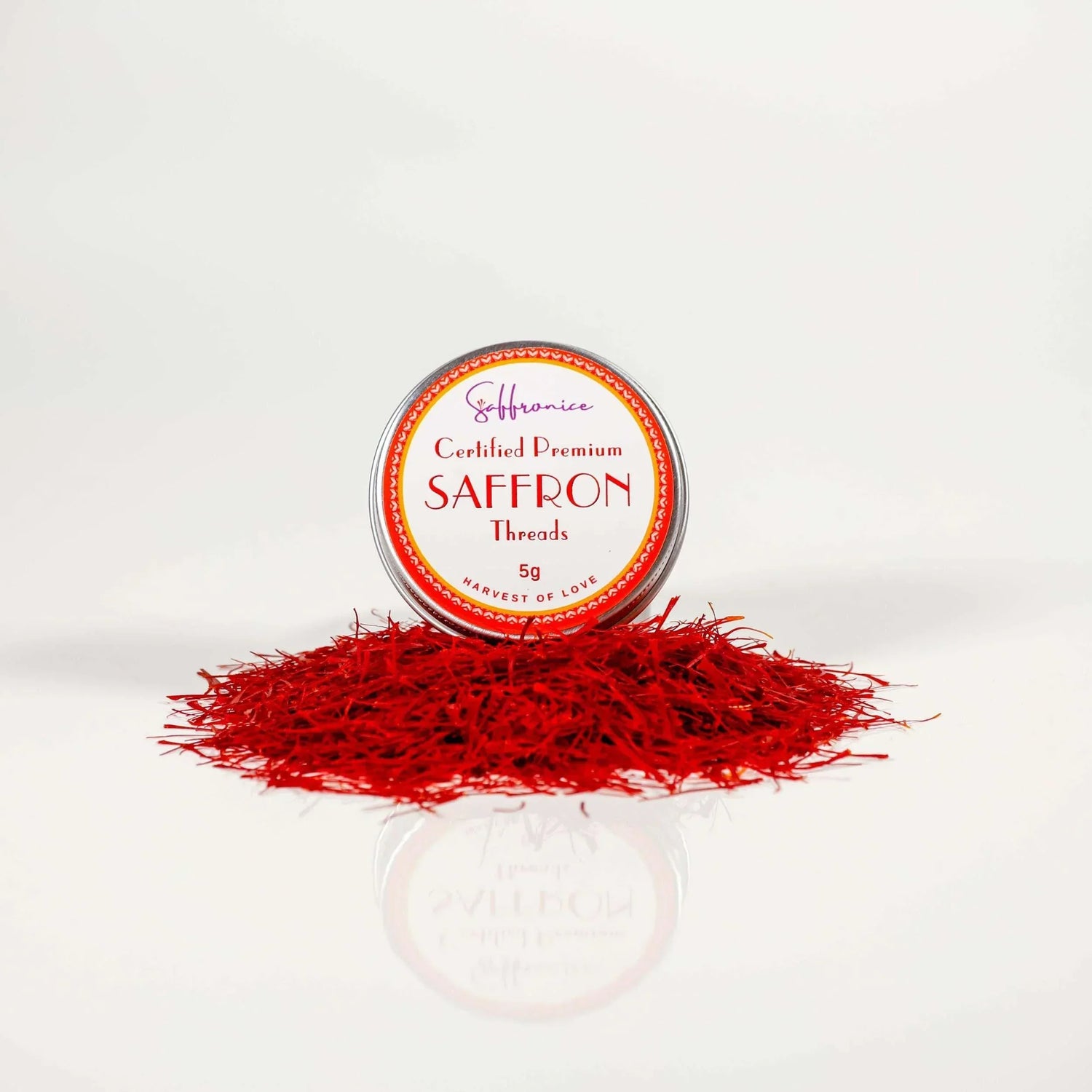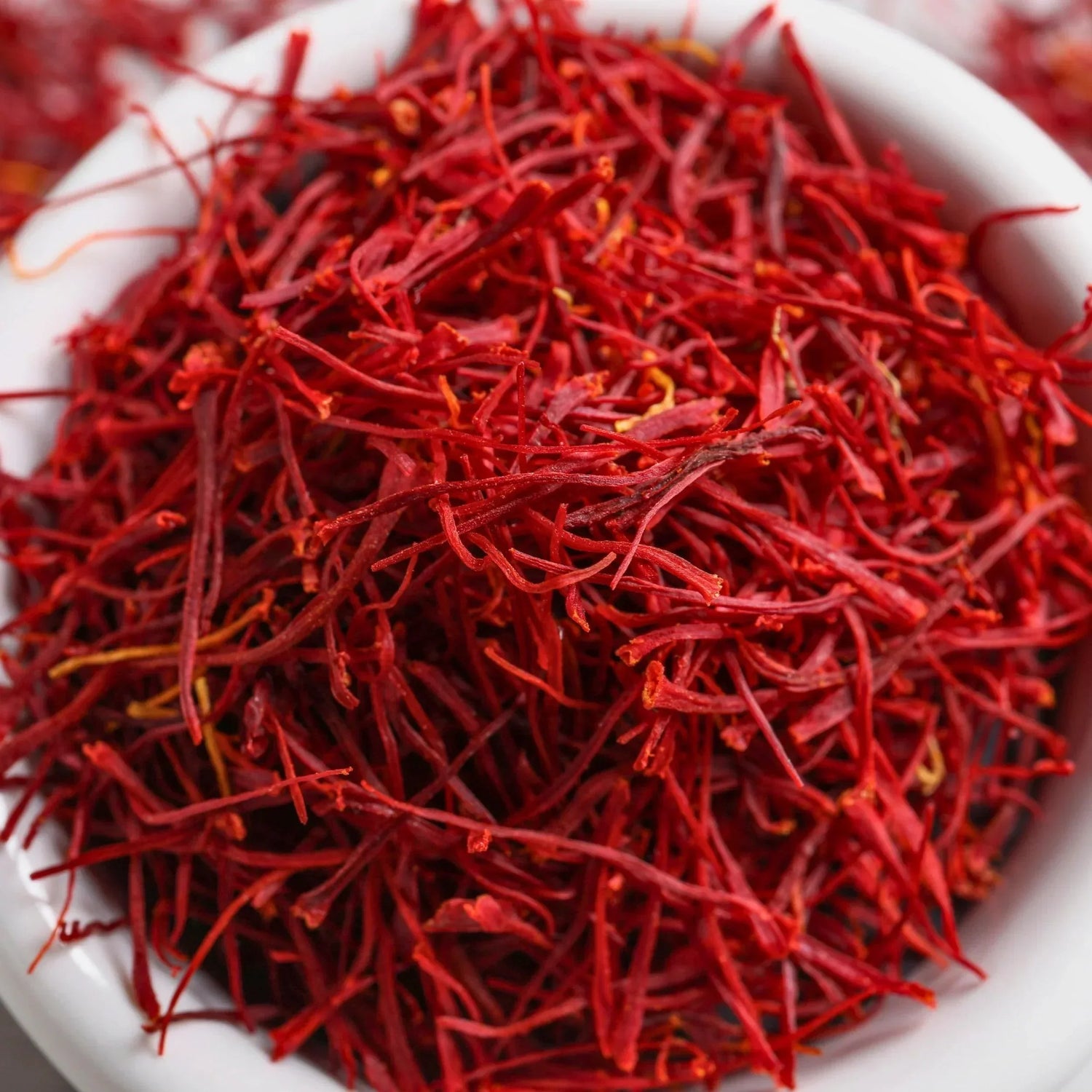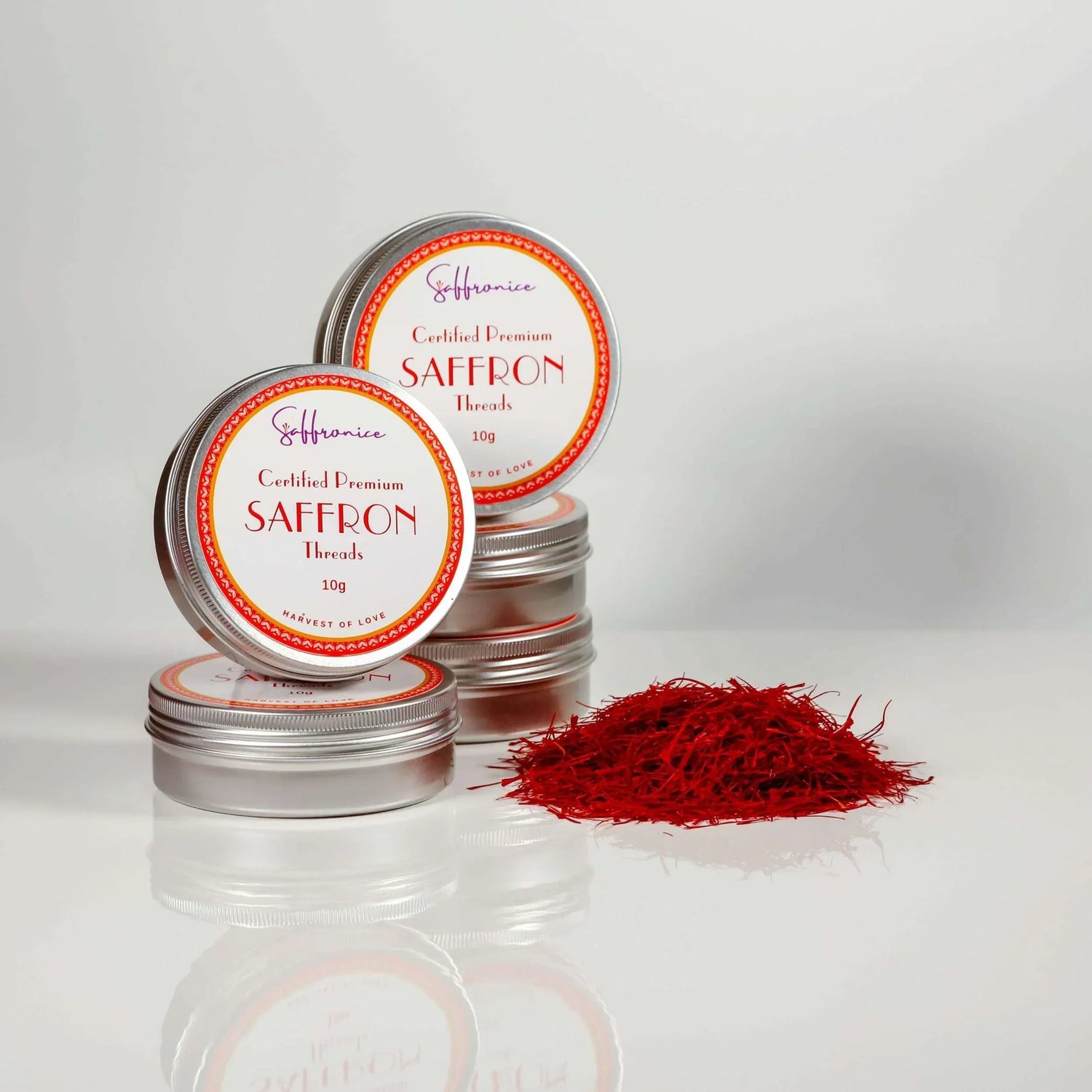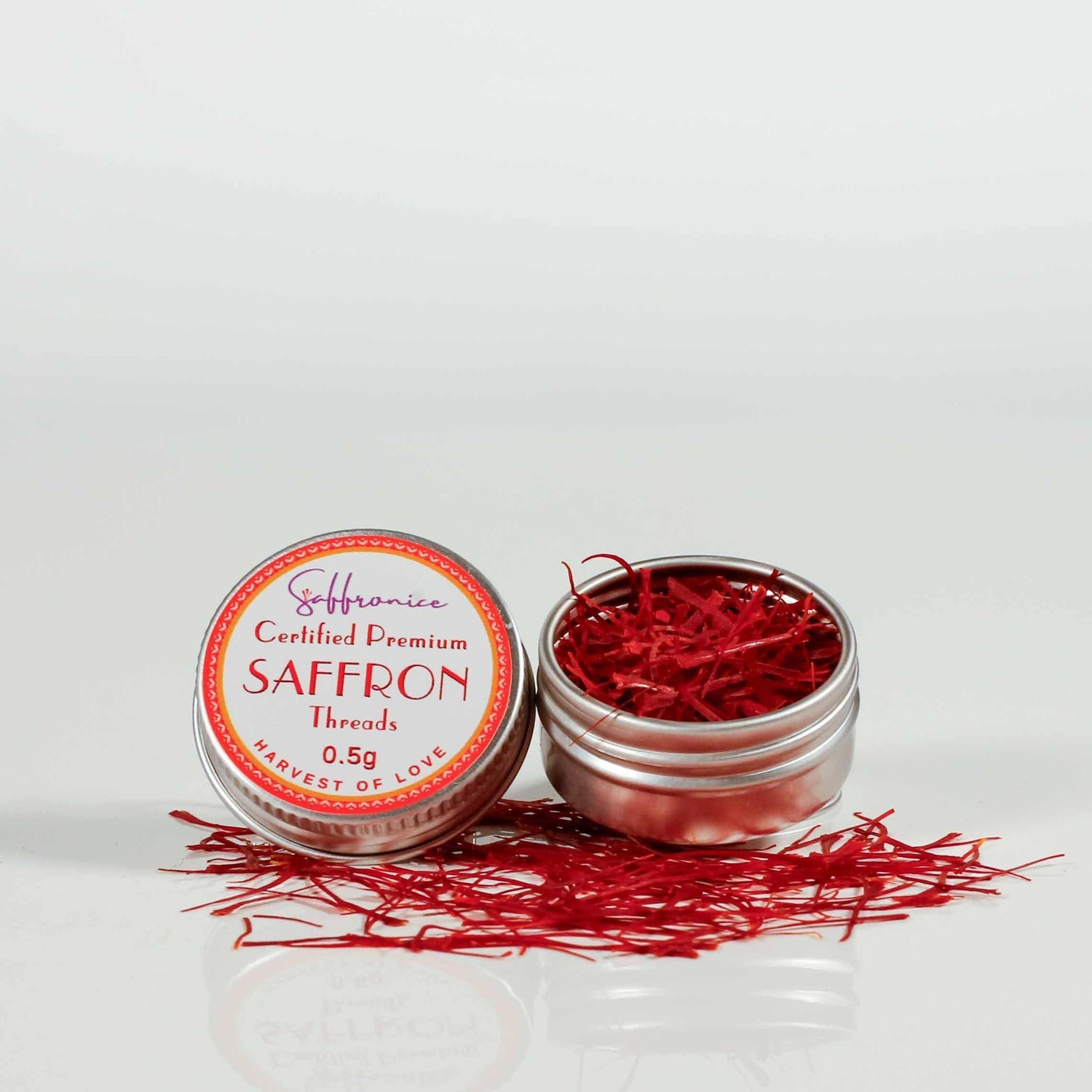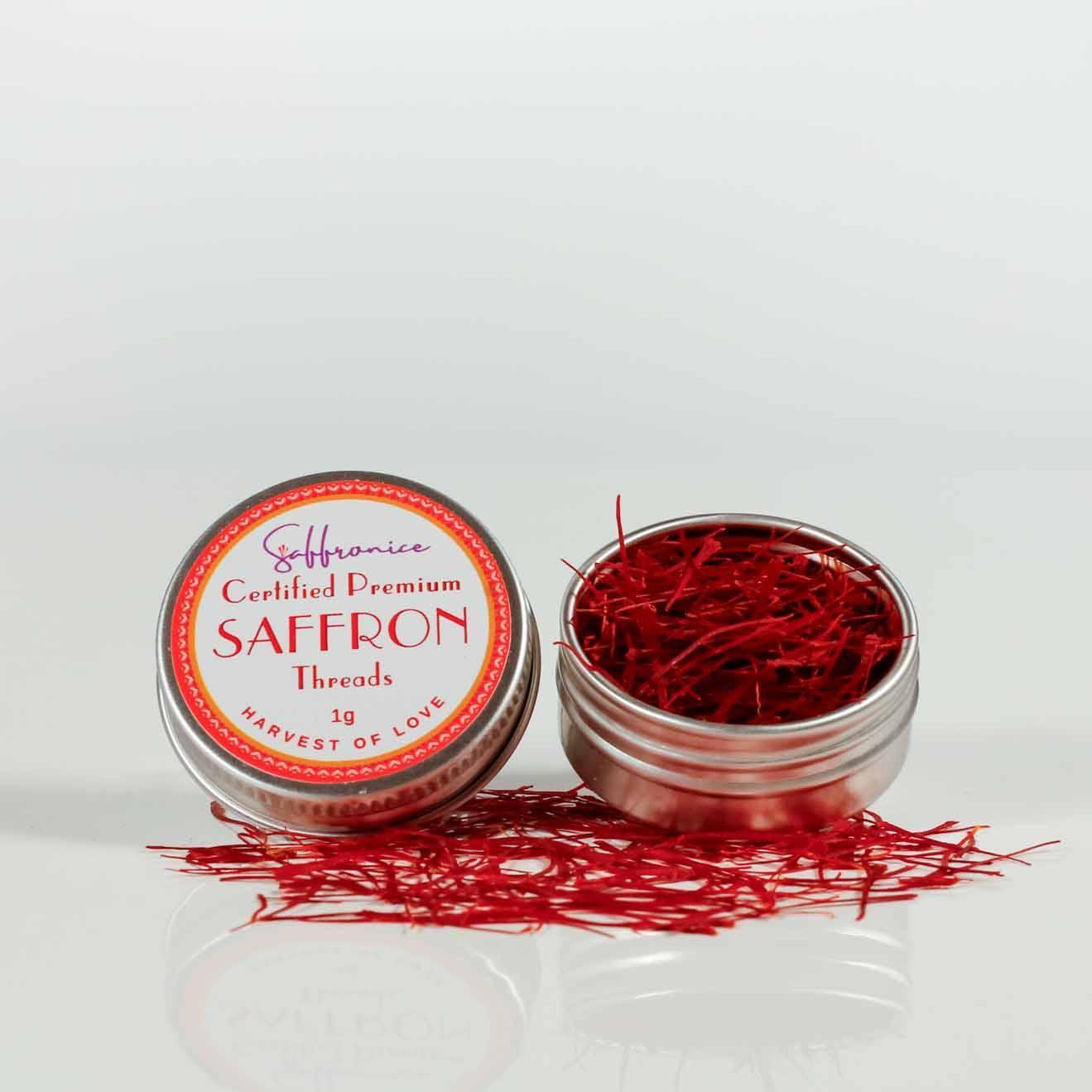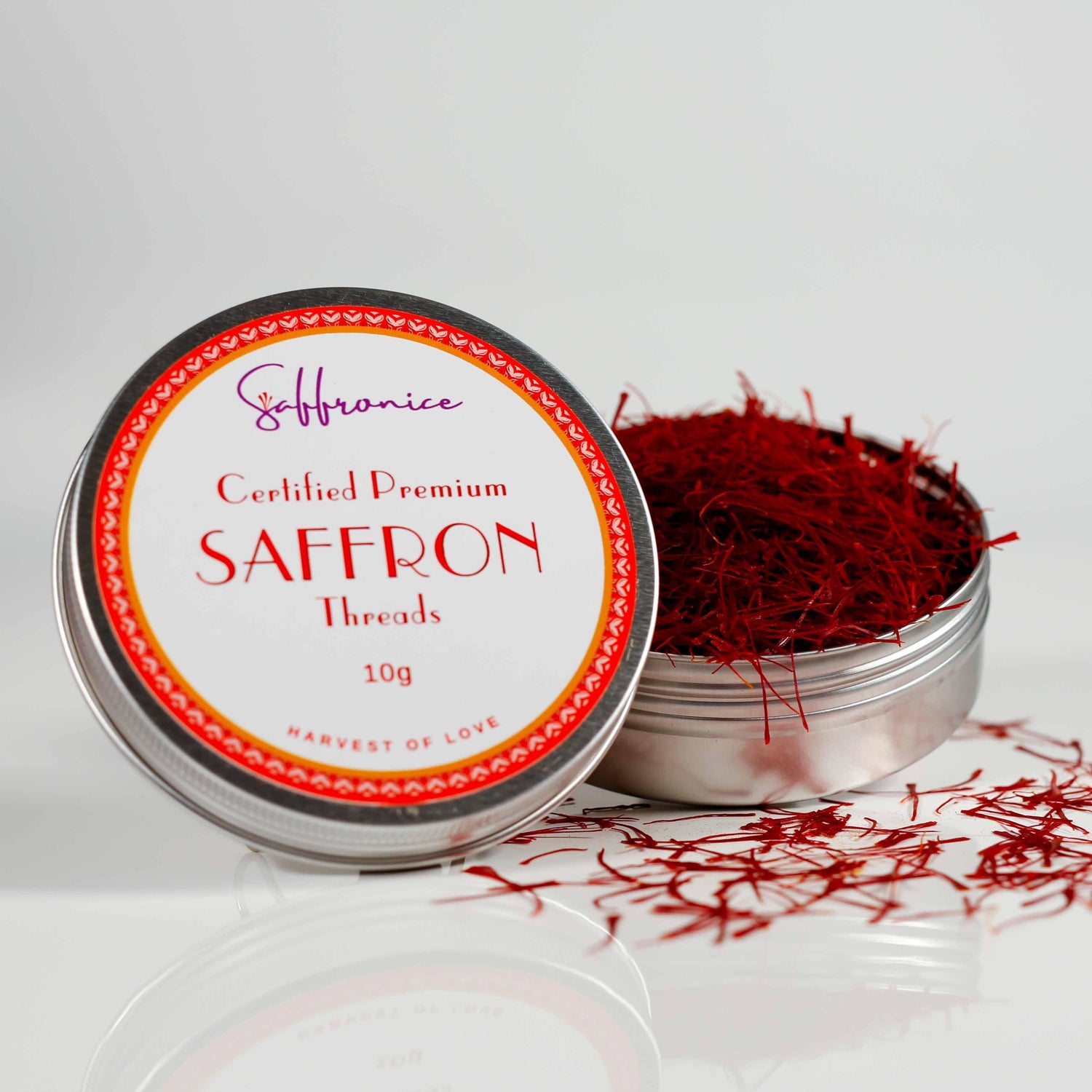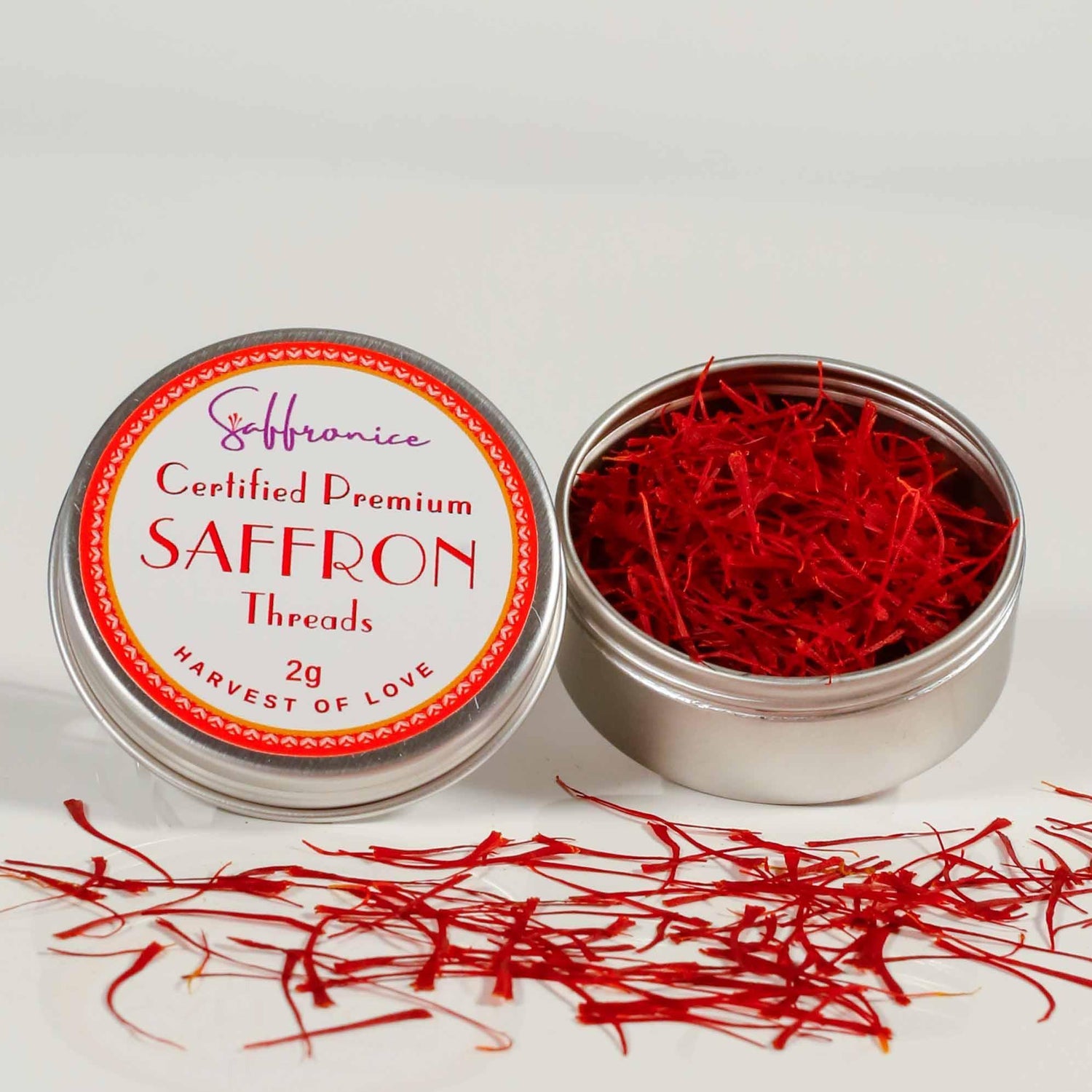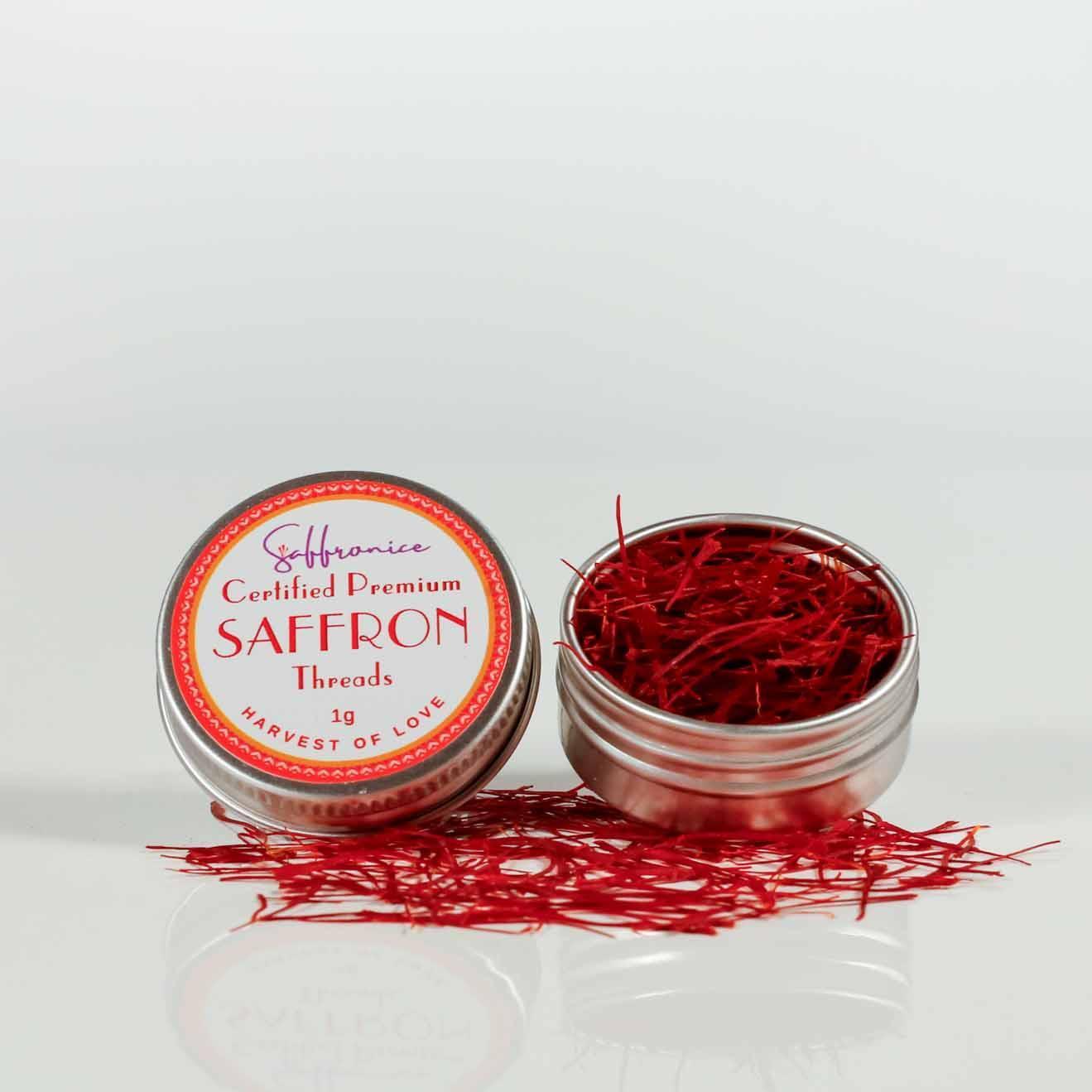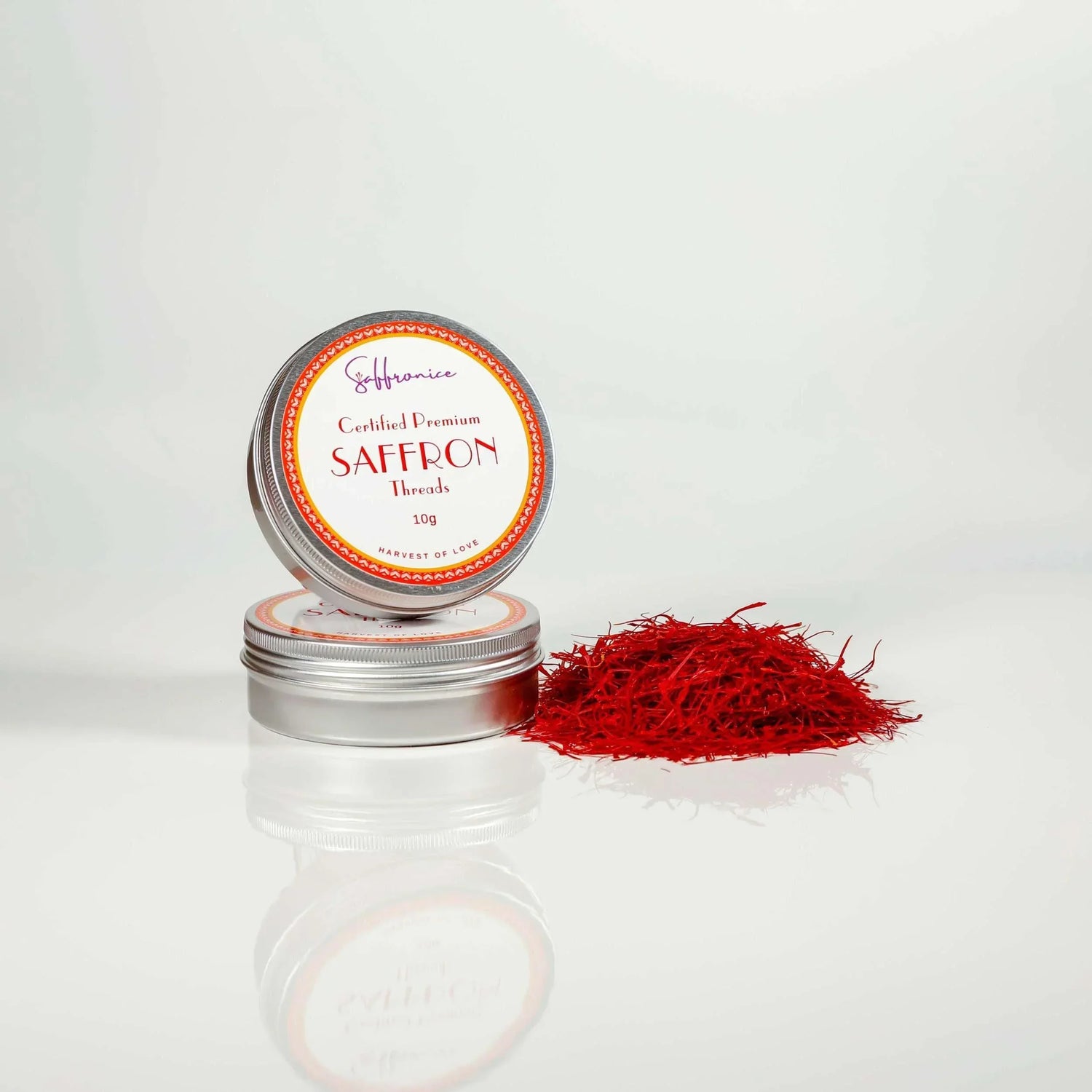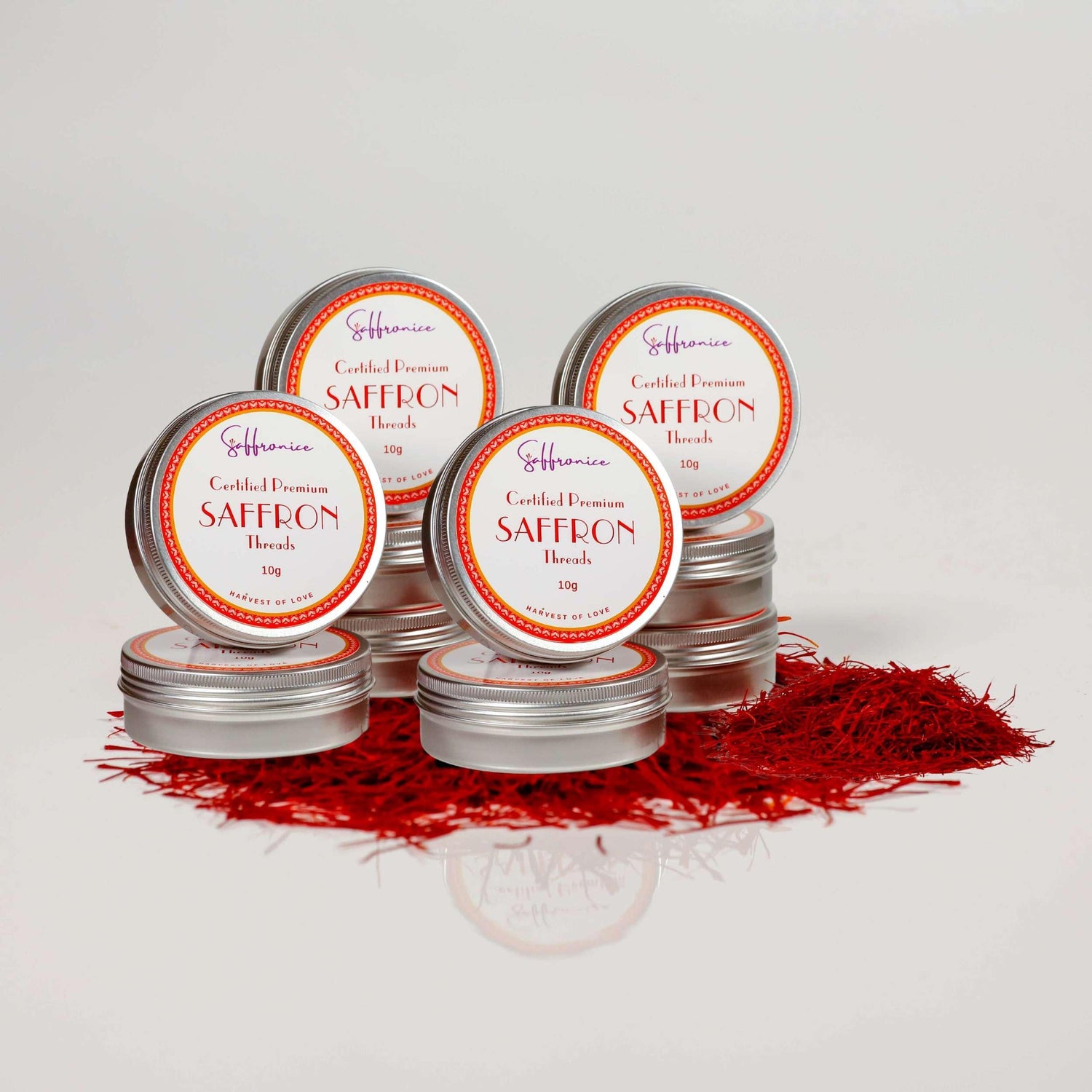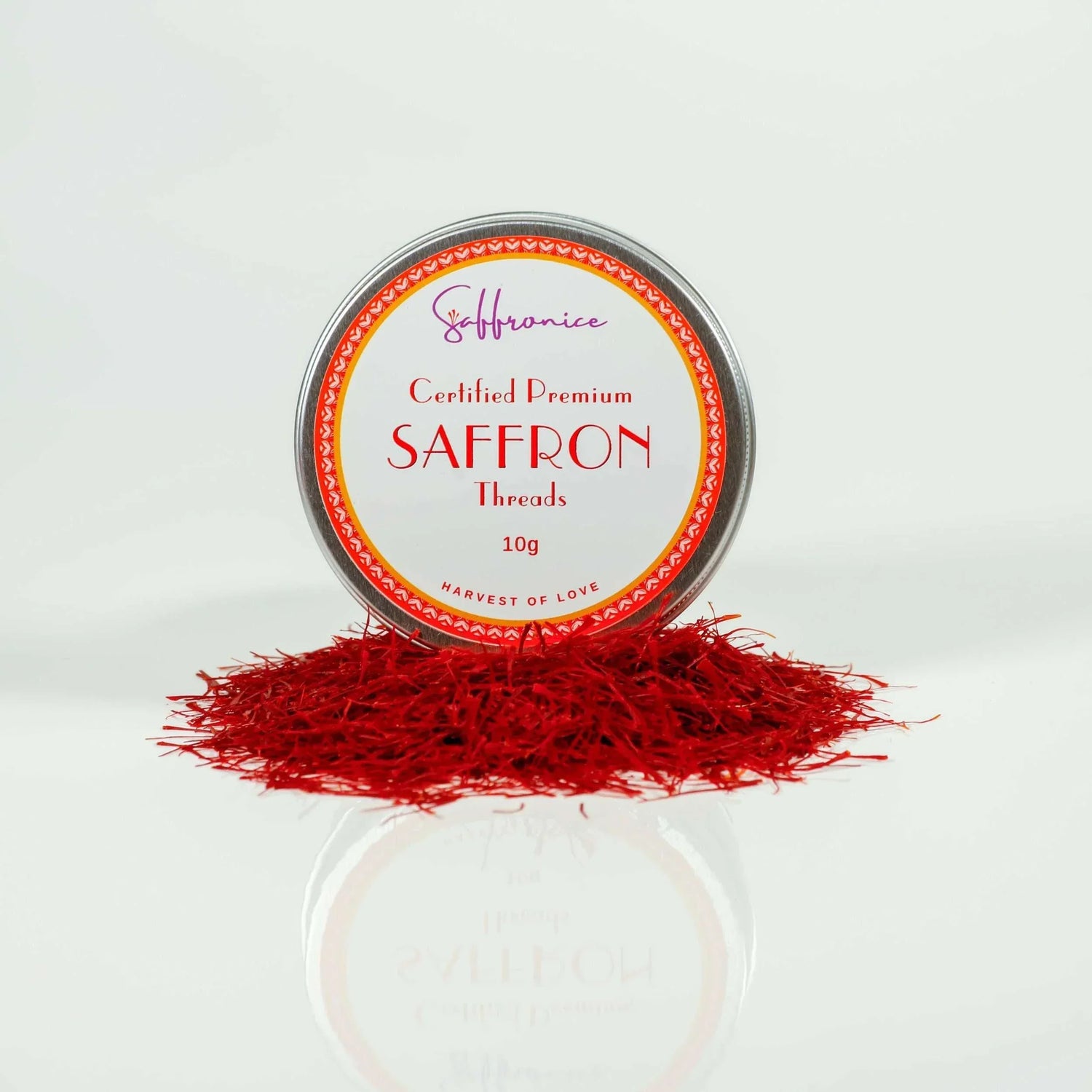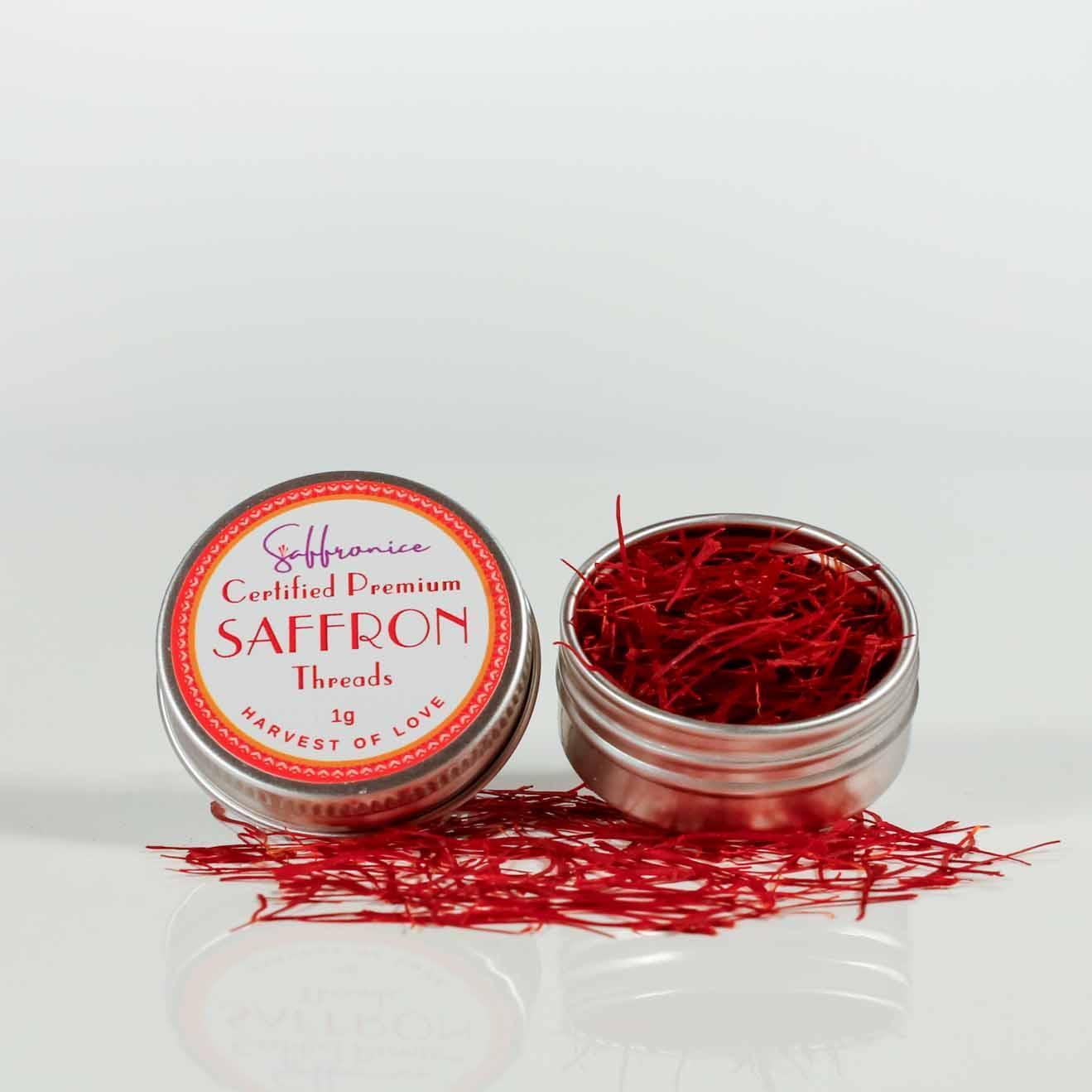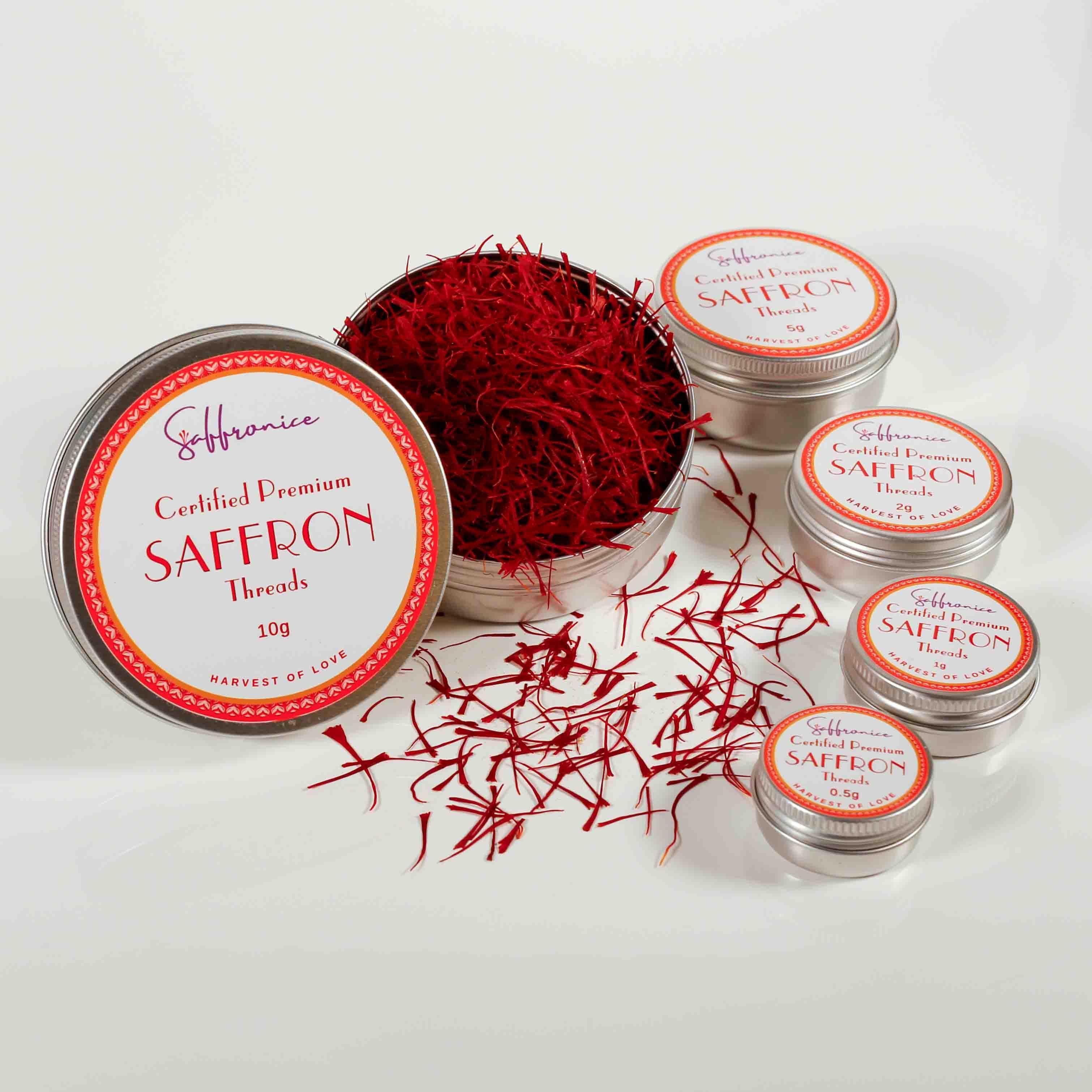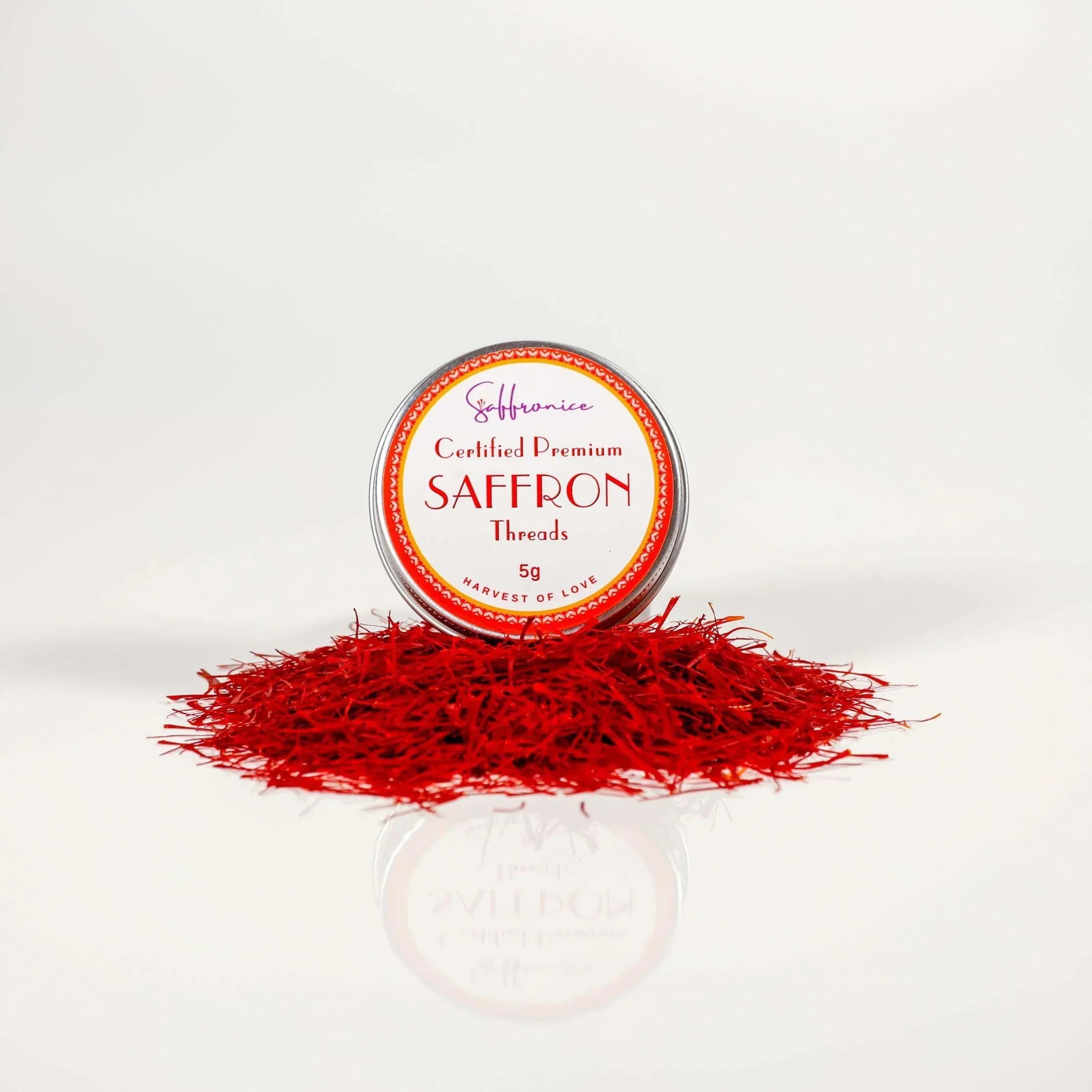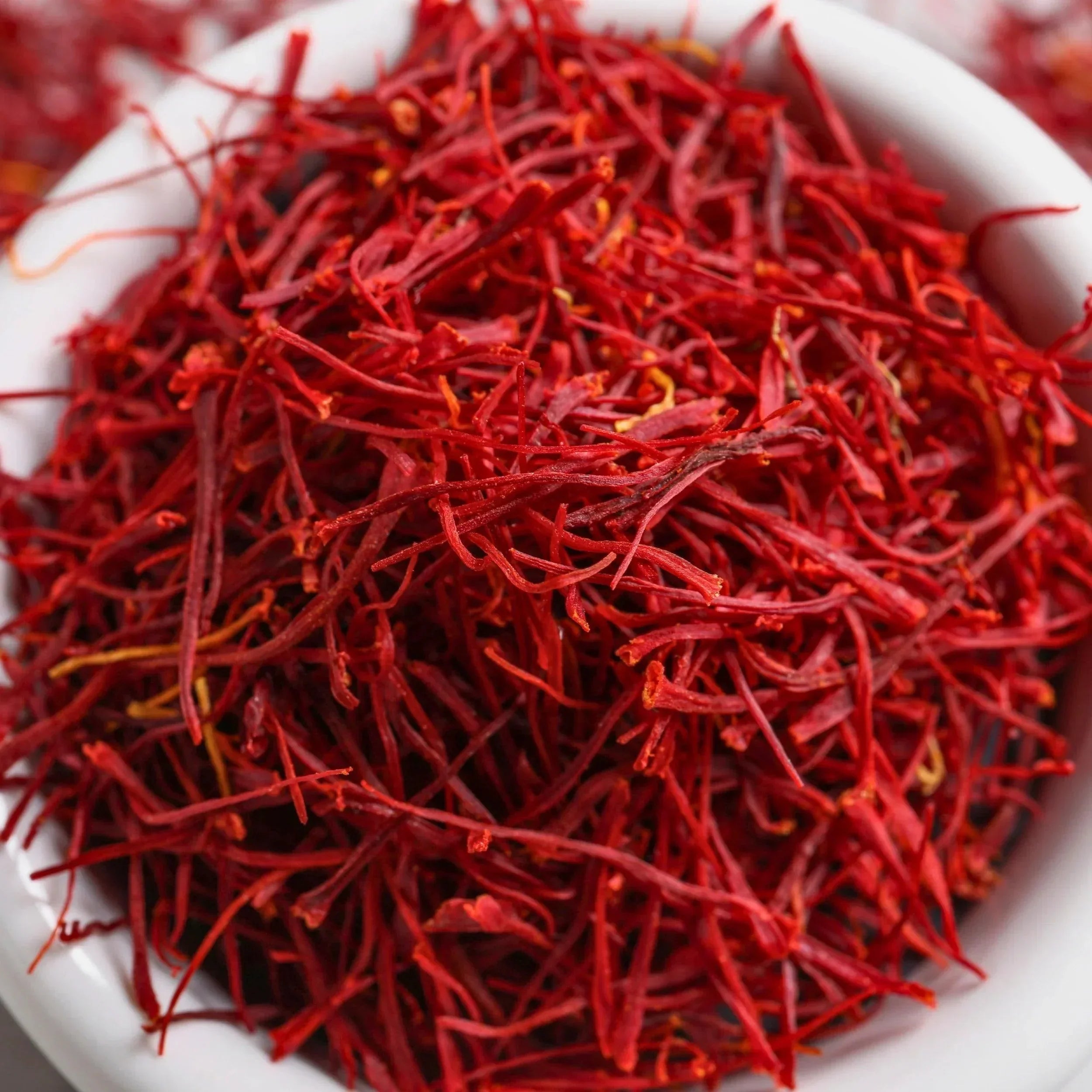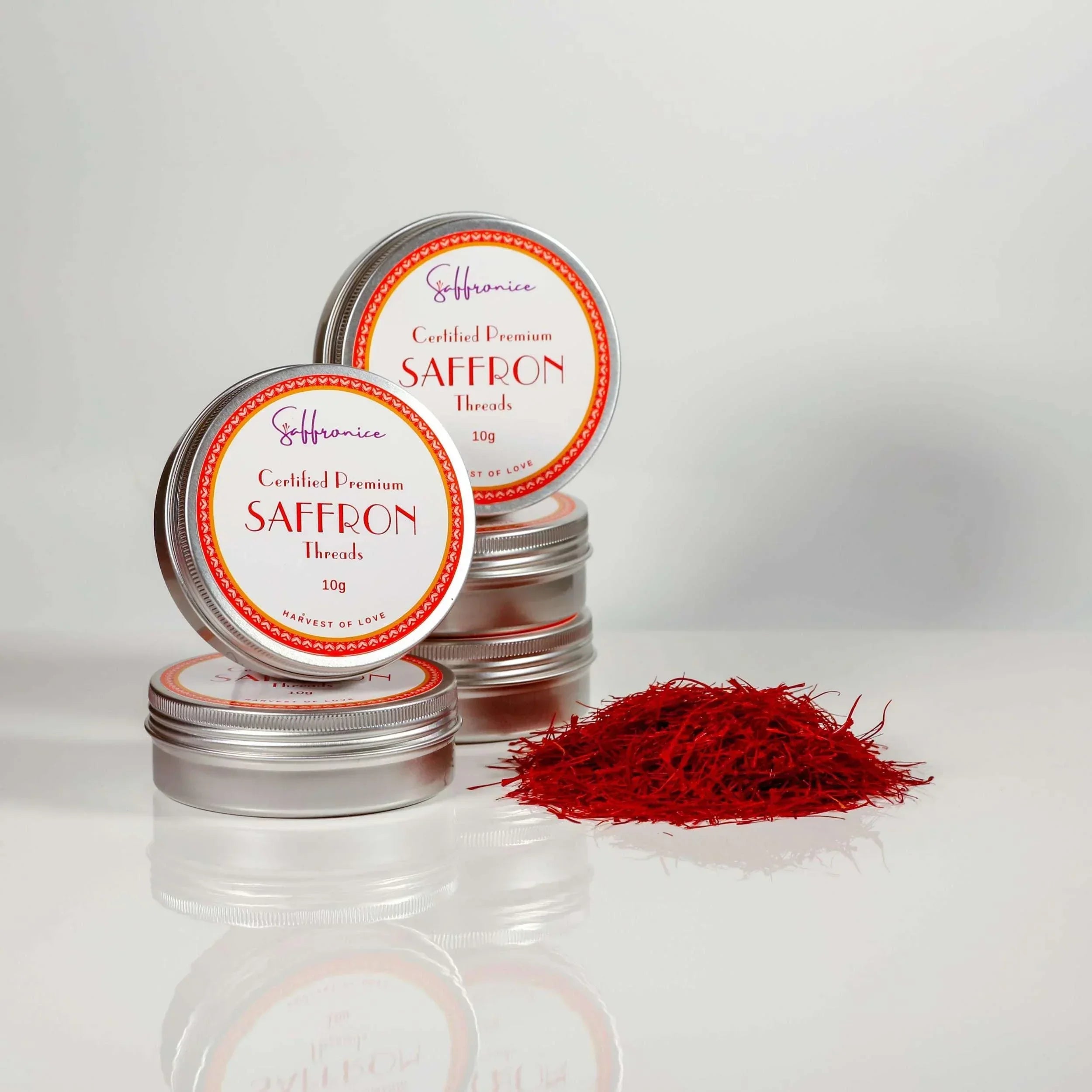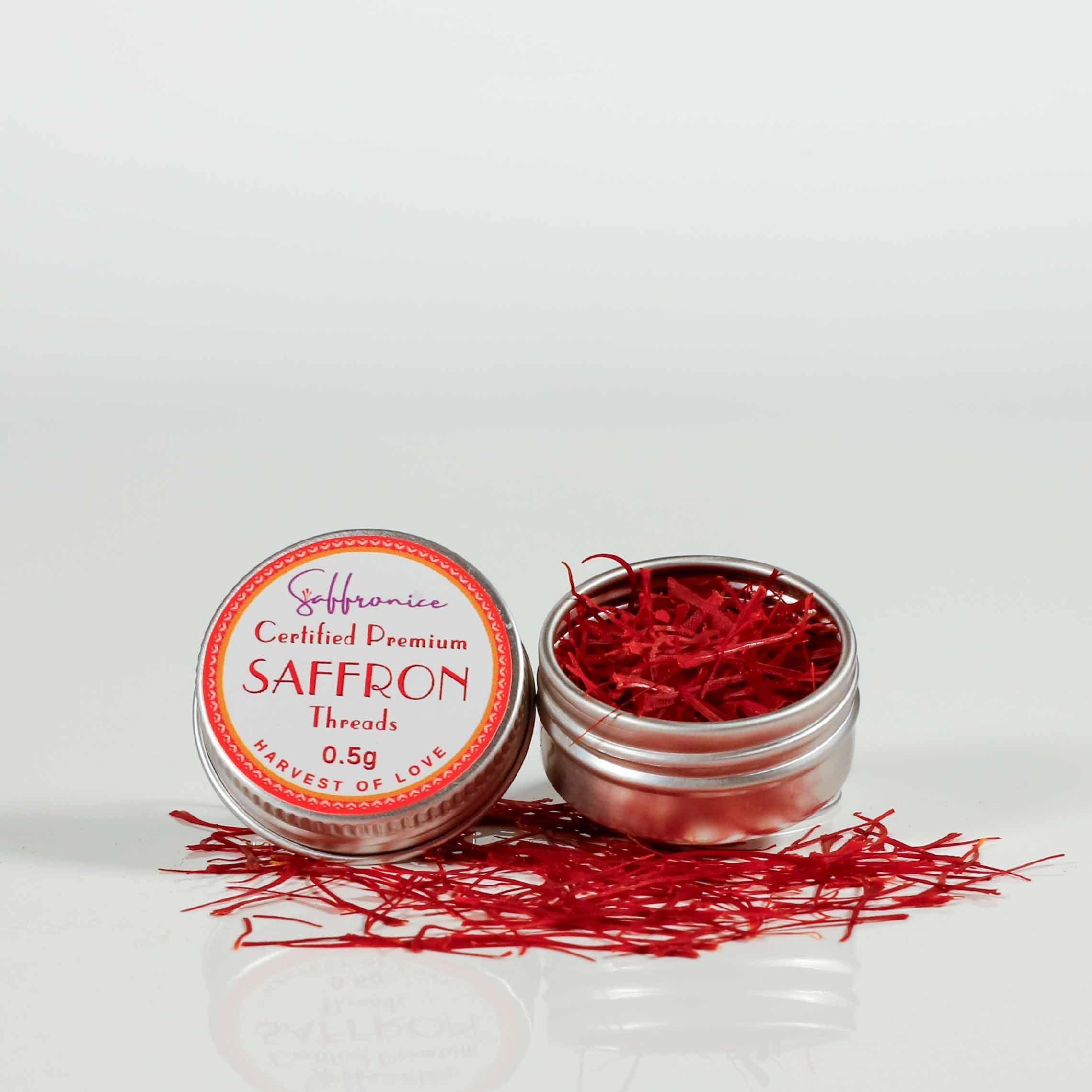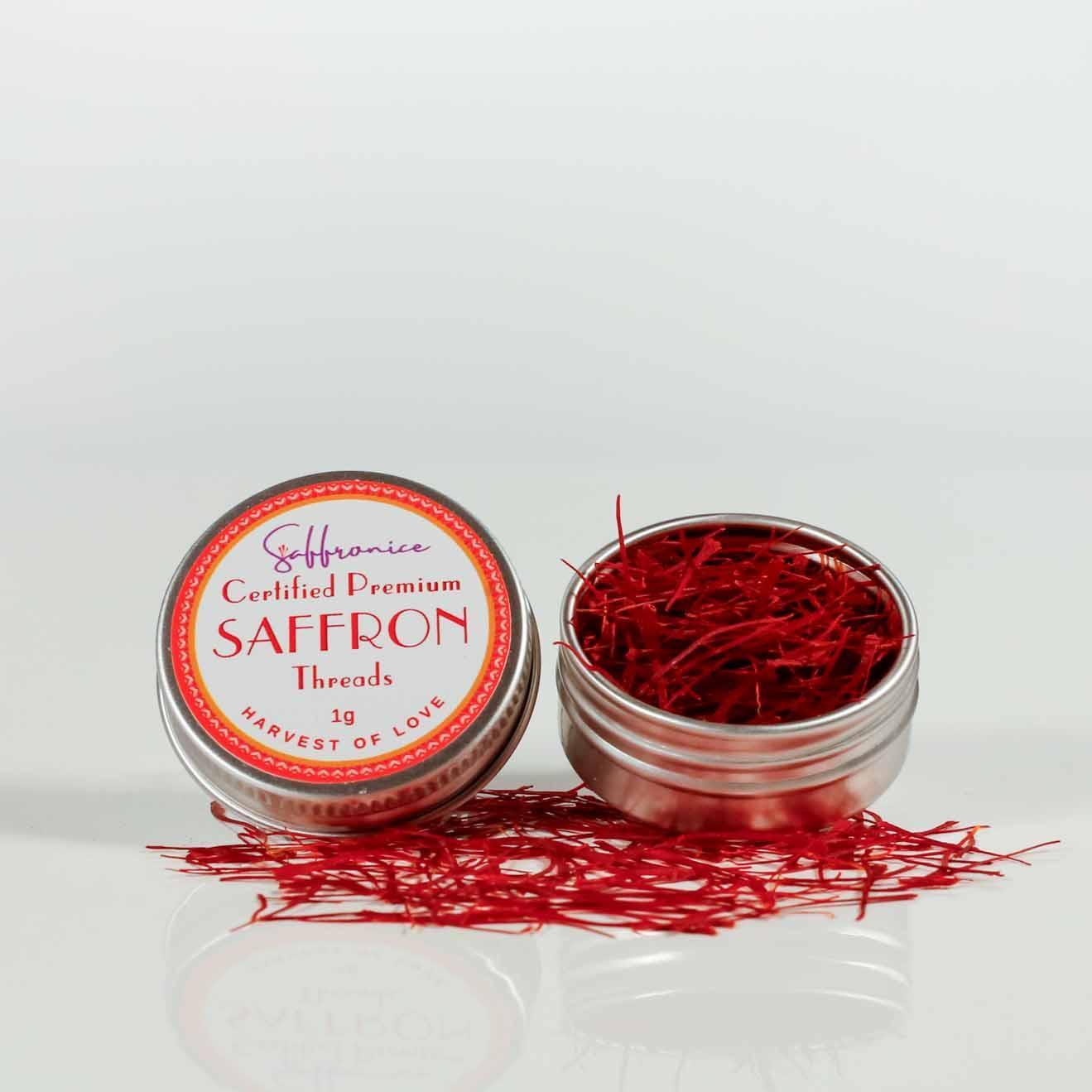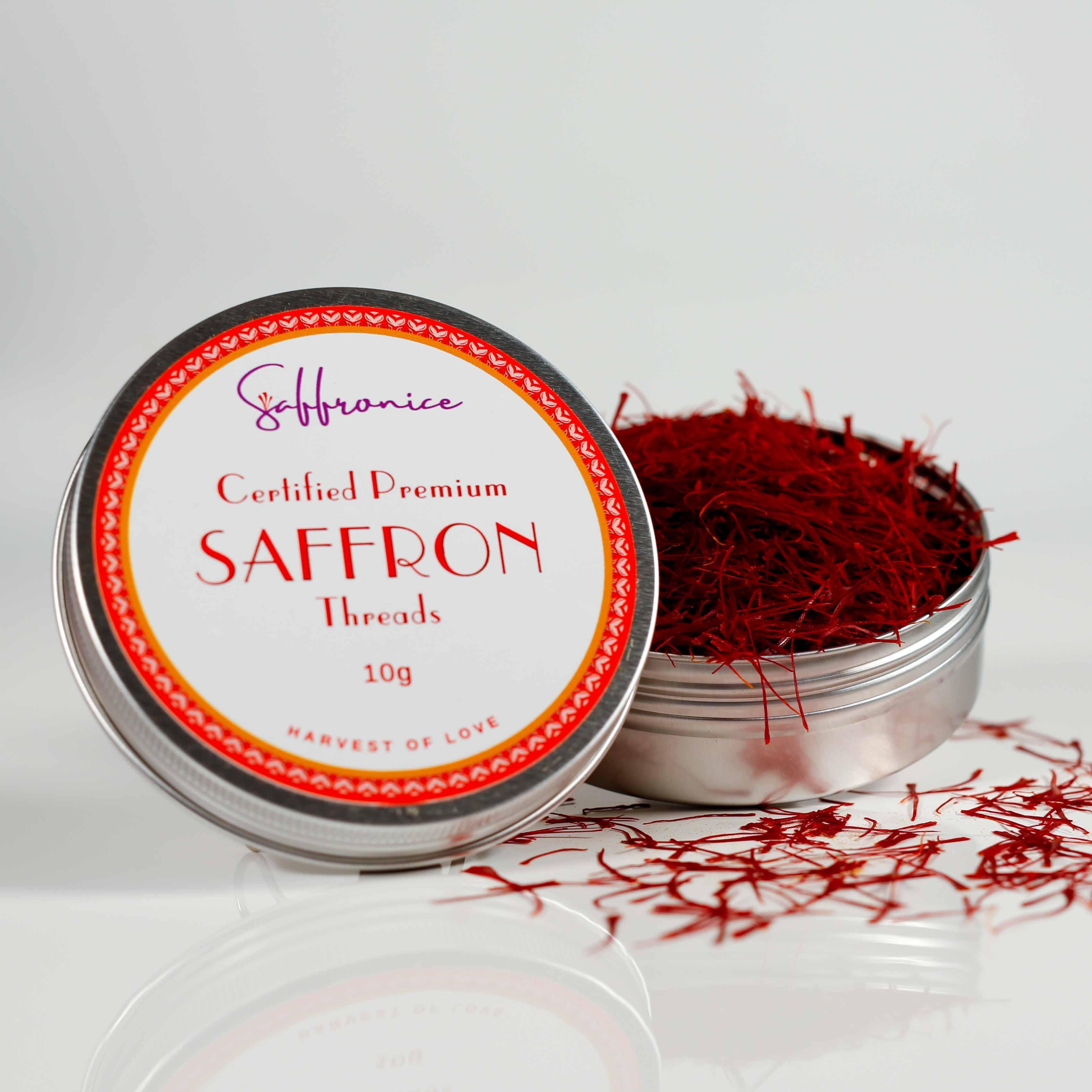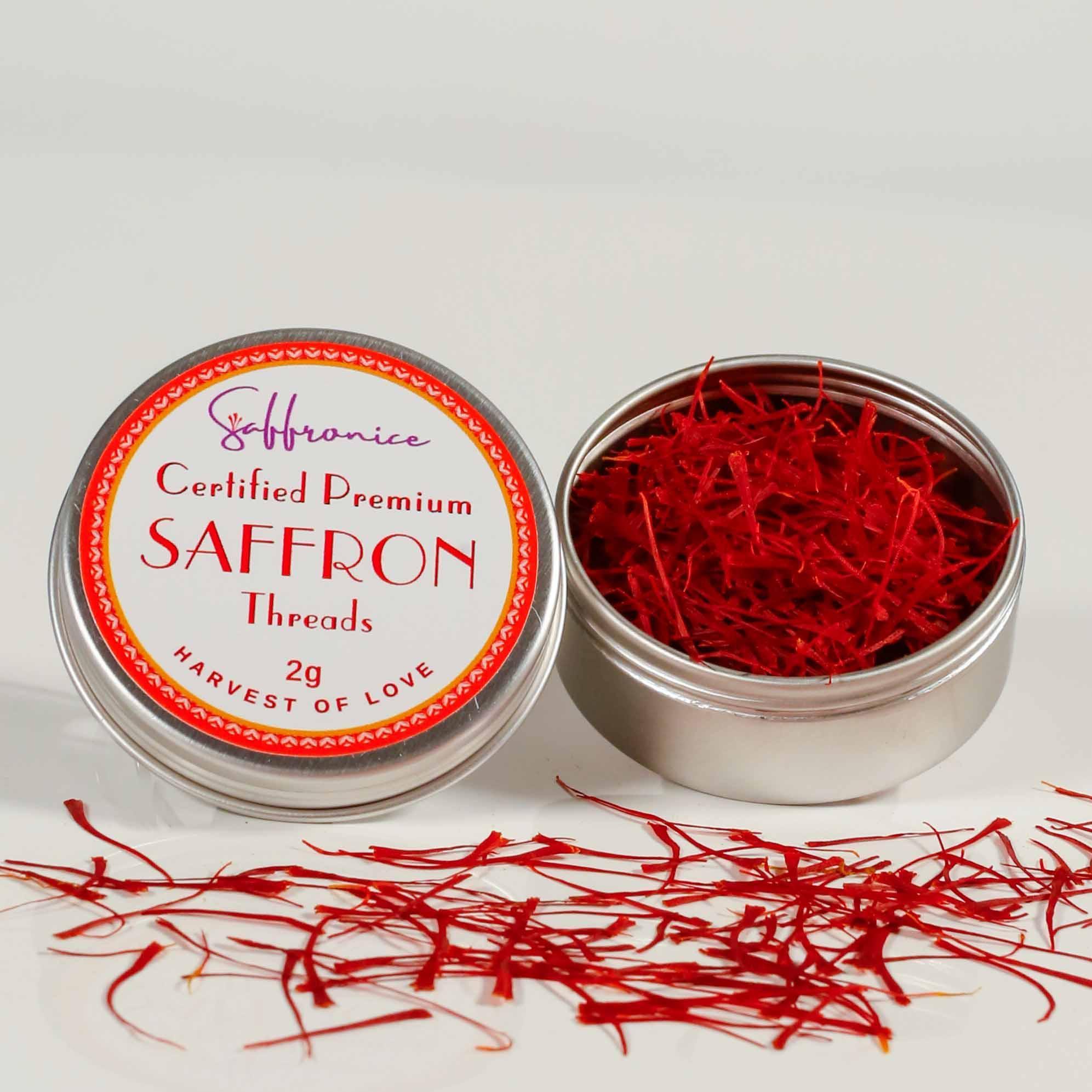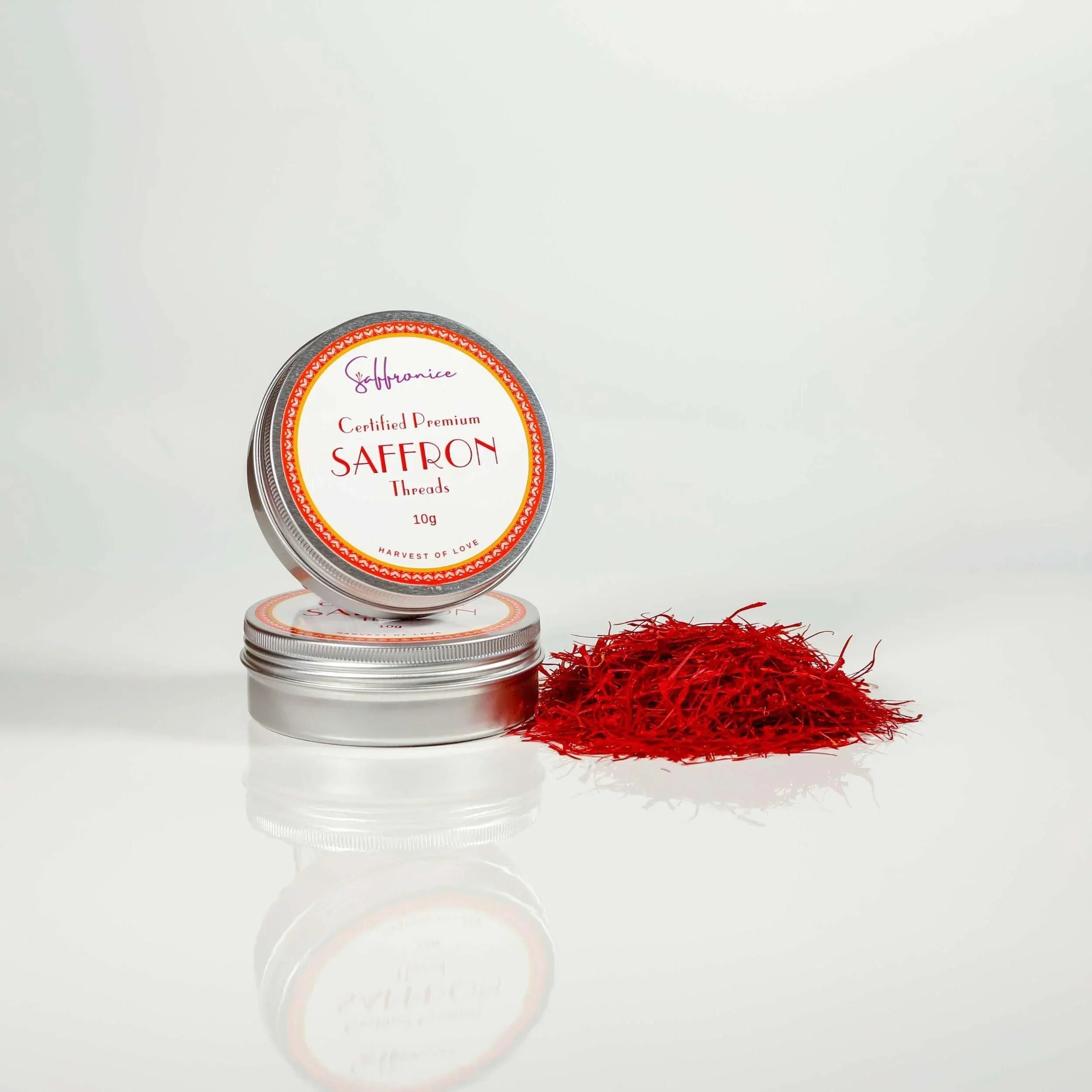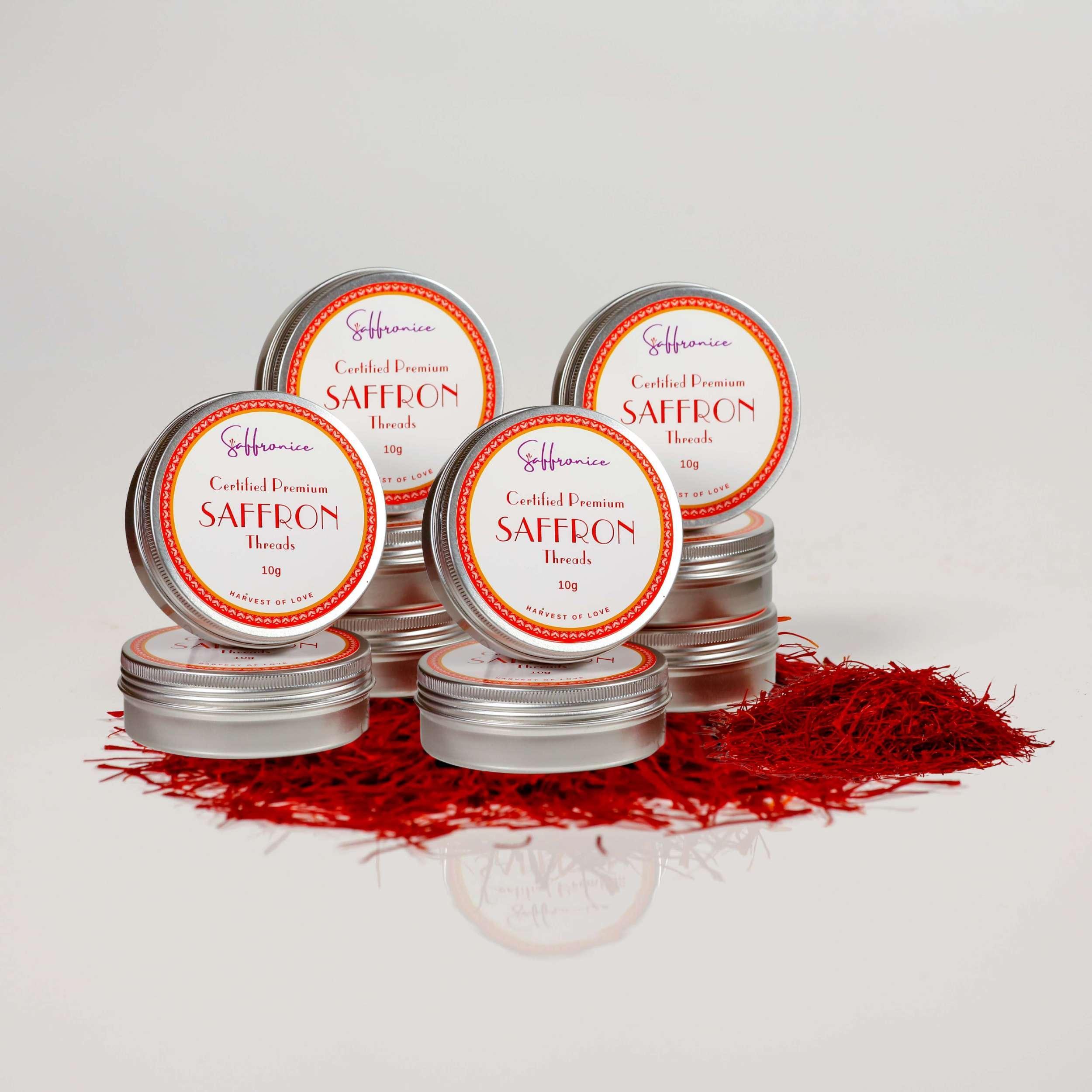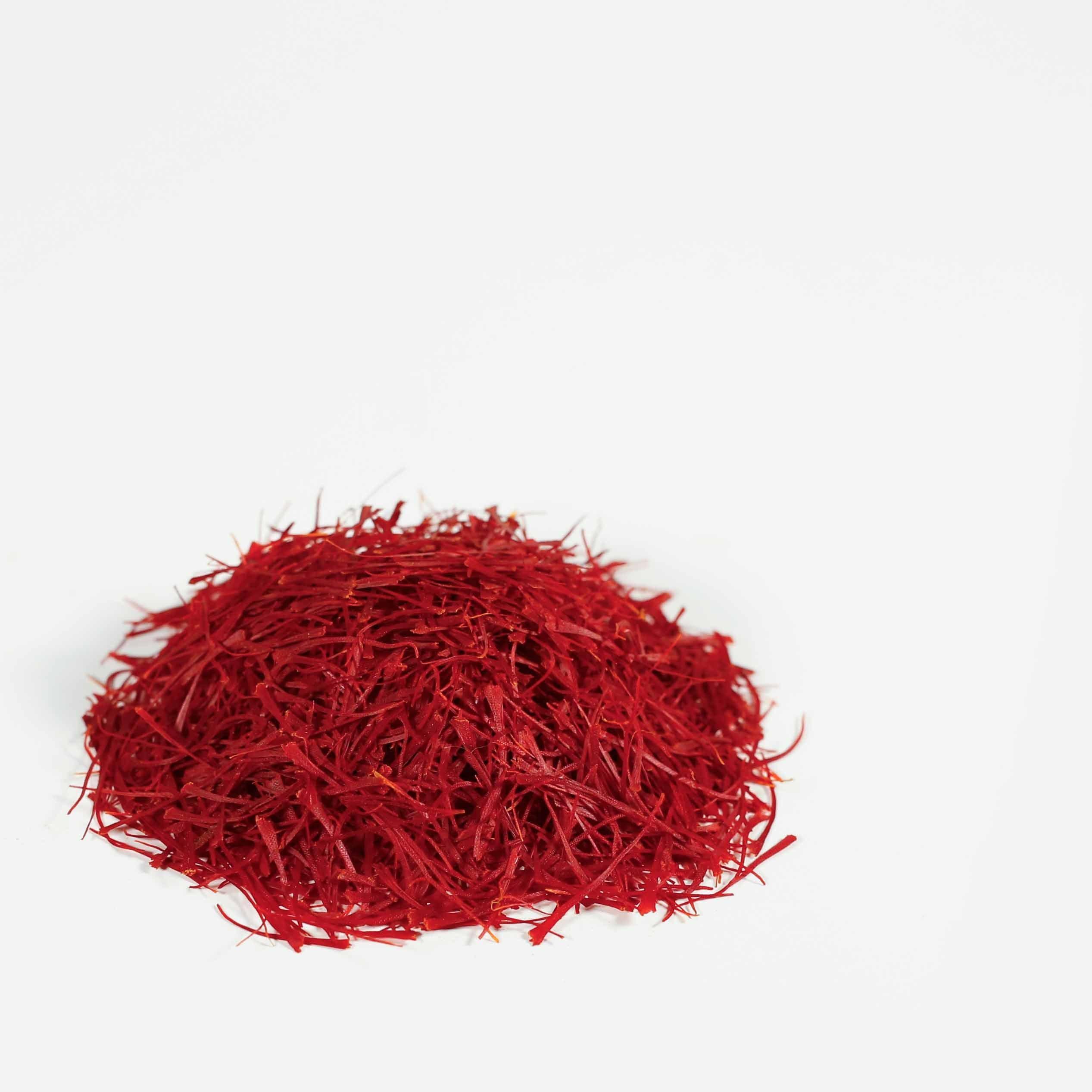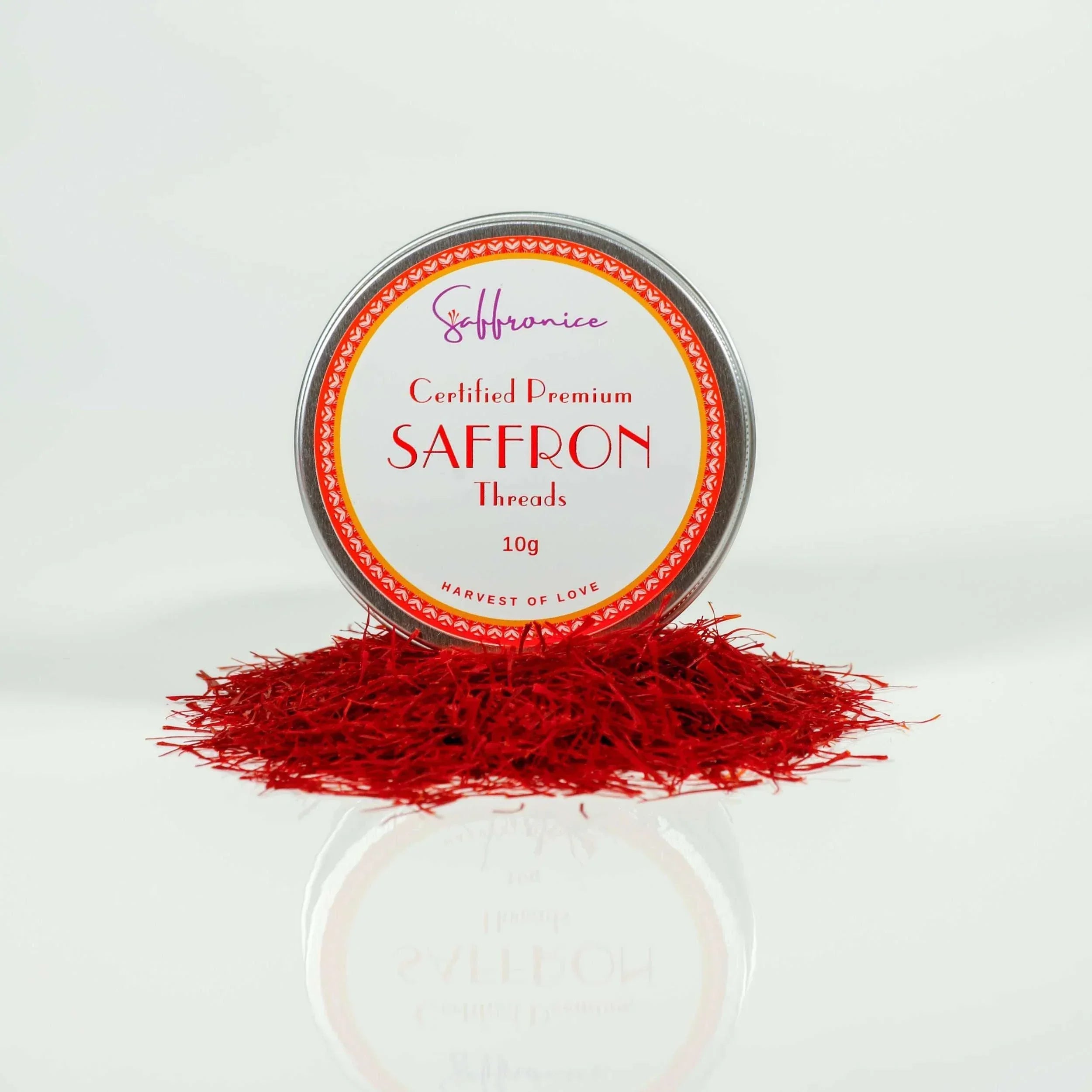Saffron, often referred to as "red gold," is a highly prized spice derived from the flower of Crocus sativus (Gresta et al., 2008). This delicate spice is renowned for its vibrant yellow color and unique flavor profile, adding a floral and earthy note to any dish (Alavizadeh & Hosseinzadeh, 2014). Revered for centuries, saffron's origins trace back to ancient Persia, where it was first cultivated and then made its way to various parts of the Mediterranean and Middle Eastern regions (Abdullaev & Espinosa-Aguirre, 2004).
Cultural Significance in Mediterranean and Middle Eastern Cuisines
Mediterranean Cuisine
In this region, saffron plays a crucial role in enhancing the visual appeal and taste of traditional dishes. It is frequently used in rice dishes like saffron rice, which complements a variety of ingredients such as vegetables, meats, or seafood (Melnyk et al., 2010).
Middle Eastern Cuisine
In Middle Eastern cuisine, saffron is often incorporated into rice dishes like biryani or pilaf. Its rich flavor pairs well with other regional spices like sumac, za'atar, and coriander (Zachariah & Parthasarathy, 2008). Saffron's addition elevates the complexity of flavors typical in Middle Eastern cooking.
Hand-harvested from flowers that bloom for just a short period each year, the labor-intensive production process makes saffron one of the most expensive spices globally (Negbi, 1999). This luxurious ingredient symbolizes refinement and adds an unparalleled depth to both Mediterranean and Middle Eastern cuisines.

1. Saffron's Role in Indian Cuisine
Saffron holds a cherished place in Indian cuisine, imparting its unique flavor and vibrant color to a variety of dishes (Srivastava et al., 2010). Its presence is especially notable in traditional recipes like biryani and kesar pulao. In biryani, saffron is often infused into the rice, lending an aromatic depth and golden hue that are integral to this beloved dish (Gowda et al., 2013). Kesar pulao, on the other hand, features saffron as a star ingredient, creating a fragrant and visually appealing rice dish.
Kashmiri Cuisine: A Saffron Haven
In the picturesque region of Kashmir, saffron enjoys a special status (Kafi et al., 2006). One iconic example is Kashmiri kahwa, a traditional tea brewed with green tea leaves, cardamom, almonds, and strands of saffron (Rather et al., 2016). This warm beverage not only delights the senses but also showcases saffron’s versatility beyond savory dishes.
Cultural Significance and Regional Variations
Saffron's use varies across India's diverse culinary landscape:
- North India: Rich gravies and festive sweets often incorporate saffron for its luxurious touch (Srivastava et al., 2010).
- South India: Desserts like payasam (a type of sweet pudding) are enhanced by saffron's distinct flavor (Gowda et al., 2013).
- West India: Gujarati cuisine features dishes such as shrikhand (a sweetened yogurt dessert) that highlight saffron (Sharma & Vijayvergia, 2013).
This prized spice transcends regional boundaries, symbolizing opulence and tradition in Indian cooking.
By exploring these diverse applications of saffron in Indian cuisine, one can appreciate its multifaceted role in enhancing both everyday meals and celebratory feasts.

2. The Essence of Saffron in Spanish Paella
Spanish cuisine shines with the iconic dish, paella—a vibrant symphony of flavors and colors, where saffron plays a starring role (Barros et al., 2012).
The Importance of Saffron in Authentic Spanish Paella
In authentic Spanish paella, saffron is indispensable. This precious spice infuses the rice with a distinct floral, earthy aroma that's unmistakable (Negbi, 1999). It's not just about the flavor; saffron's golden hue transforms the dish into a visual masterpiece.
How Saffron Contributes to the Dish’s Vibrant Color and Flavor
Saffron threads are gently toasted and steeped in warm broth before being added to the paella. This process releases their full potential, imparting:
- Vibrant Color: The rich, golden-yellow hue that symbolizes a well-cooked paella (Barros et al., 2012).
- Unique Taste Profile: A subtle yet complex mix of floral and honey-like notes, enhancing other ingredients like seafood, chicken, or rabbit.
Variations of Paella Across Regions in Spain
While Valencia is credited as the birthplace of paella, regional variations abound (Fraser, 2015):
- Paella Valenciana: Combines rabbit, chicken, and sometimes snails with green beans and saffron.
- Seafood Paella: Popular along coastal areas, featuring mussels, shrimp, clams, and squid.
- Mixed Paella (Paella Mixta): A delightful blend of meat and seafood.
Each version pays homage to local ingredients but remains unified by the essential presence of saffron.

3. Persian Specialties Enhanced by Saffron
Saffron is an important ingredient in many traditional dishes of Persian cuisine, which is known for its complex flavors (Karimi et al., 2010). One famous example is Ashe-E-Reshteh, a filling soup made with beans, herbs, and noodles. The addition of saffron not only brings a subtle fragrance but also deepens the overall taste.
Signature Recipes by Renowned Chefs
Omid Roustaei and Naz Deravian are two chefs celebrated for their expertise in Persian cooking. Omid Roustaei's recipe for Zereshk Polo (barberry rice) showcases how saffron can transform a simple dish into a culinary masterpiece (Roustaei, 2018). Similarly, Naz Deravian’s Tahdig (crispy rice) uses saffron to create a visually stunning and flavorful crust that’s beloved by many (Deravian, 2018).
Enhancing Traditional Persian Flavors
In Persian cuisine, saffron is often dissolved in hot water or milk before being added to dishes, ensuring even distribution and maximum flavor extraction (Karimi et al., 2010). It complements other traditional ingredients like rosewater, cardamom, and dried fruits, creating a harmonious balance that's characteristic of Persian specialties.
Saffron's role extends beyond just flavor; it imbues dishes with a golden hue that symbolizes wealth and luxury, making it an essential element in Persian culinary traditions (Melnyk et al., 2010). From festive occasions to everyday meals, saffron remains a cherished spice that elevates the dining experience.
4. Saffron's Sweet Touch in Middle Eastern Desserts
Middle Eastern desserts are known for their rich flavors and complex preparation methods. One key ingredient that often takes these sweet treats to the next level is saffron (Zachariah & Parthasarathy, 2008).
Popular Desserts Featuring Saffron
- Baklava
This iconic dessert, with its layers of flaky pastry, nuts, and honey, often gets an extra touch of luxury with the addition of saffron. The spice not only enhances the aroma but also adds a subtle yet distinct flavor (Karaosmanoglu et al., 2010).
- Mahalabia
A delightful milk-based dessert, Mahalabia combines milk with saffron and rosewater to create a creamy and aromatic dish (Hussein et al., 2018). This dessert is a staple at many Middle Eastern feasts, offering a refreshing counterbalance to spicier dishes.
Cultural Importance
Sweets hold significant cultural importance during celebrations and festivals in Middle Eastern societies (Chevalier, 1996). Whether it's Eid, Nowruz, or weddings, desserts infused with saffron symbolize prosperity and joy. The golden hue of saffron-laced treats adds a festive touch, making them visually appealing and culturally resonant.
Saffron's ability to transform simple ingredients into luxurious delicacies showcases its versatility. From enhancing the visual appeal to enriching the taste, saffron remains an integral part of Middle Eastern culinary traditions.

5. Moroccan Tagine: A Symphony of Spices with Saffron
Moroccan cuisine is a delightful blend of flavors, and the tagine is its star dish. This slow-cooked stew gets its name from the earthenware pot it's traditionally cooked in (Turkmani & Abu Zayed, 2014). Saffron is an essential ingredient in Moroccan tagine dishes, giving them their distinct aroma and vibrant color.
How Saffron is Used in Moroccan Tagine
Before being added to the tagine, saffron threads are usually soaked in warm water to release their color and flavor (Benlafkih, 2012). This golden liquid is then mixed into the dish, ensuring that every bite has the essence of saffron.
Combination with Other Spices
The magic of a Moroccan tagine lies in its complex spice blend (Farhat et al., 2016):
- Cumin
- Coriander
- Ginger
- Turmeric
- Paprika
These spices work in harmony with saffron, creating layers of flavor that are both rich and fragrant. The balance of sweetness from dried fruits like apricots or prunes, combined with the warmth of spices, makes for an unforgettable culinary experience.
Influence on Flavor Profiles and Presentation
Saffron not only enhances the taste but also improves the visual appeal of the dish. The golden color of saffron threads contrasts beautifully with ingredients like chicken, lamb, or vegetables (Benlafkih, 2012). The result is a visually stunning and flavorful masterpiece that showcases the skill of Moroccan cooking.
"The magic of saffron lies in its ability to transform simple ingredients into something extraordinary," says Chef Mourad Lahlou, a renowned expert in Moroccan cuisine (Lahlou, 2016).
With each spoonful, you’ll discover why saffron is cherished in Moroccan kitchens, adding depth and elegance to every tagine.
6. Italian Risotto alla Milanese: A Classic with Saffron's Elegance
Risotto alla Milanese is a perfect example of how much Italian cuisine loves saffron. This famous dish comes from Milan and is known for its creamy texture and beautiful golden color, both made possible by the careful use of saffron (Capatti & Montanari, 2003).
The Role of Saffron in Making Risotto alla Milanese
Saffron is the main ingredient that turns ordinary risotto into something luxurious. When added to the broth, saffron releases its bright color and unique aroma, giving the dish a subtle yet complex flavor (Berrino & Bellati, 2011). The result is a rich risotto that pleases both the eyes and taste buds.
Techniques for Using Saffron Effectively in Italian Cooking
To master the use of saffron in Italian cooking, here are a few key techniques:
- Toasting: Gently toast saffron threads in a dry pan to enhance their flavor before soaking them in warm water or broth (Berrino & Bellati, 2011).
- Infusion: Allow the toasted saffron to steep in hot liquid for at least 15 minutes, ensuring maximum color and flavor extraction.
- Incorporation: Add the infused liquid gradually during the risotto cooking process, allowing the rice to absorb the essence of saffron fully (Capatti & Montanari, 2003).
Comparisons with Other Rice Dishes Across Cultures
While Risotto alla Milanese is one-of-a-kind in its preparation and ingredients, it has similarities with other saffron-infused rice dishes around the world:
- Spanish Paella: Both dishes use saffron for color and flavor, but paella includes various proteins like seafood and meats (Barros et al., 2012).
- Persian Tahdig: Known for its crispy bottom layer, this dish also uses saffron to enhance its rich taste (Karimi et al., 2010).
- Indian Biryani: Here, saffron contributes to both the fragrance and visual appeal, much like in risotto (Srivastava et al., 2010).
The beauty of Risotto alla Milanese lies in its simplicity—where each grain of rice pays tribute to saffron's magic.

7. Bouillabaisse: A French Seafood Stew Infused with Saffron's Depth
Bouillabaisse is a classic French seafood stew that comes from the coastal city of Marseille. This dish is all about celebrating the ocean, with a variety of fish and shellfish cooked perfectly in a fragrant broth. But what makes bouillabaisse truly special is the addition of saffron, which brings a one-of-a-kind depth of flavor.
How Bouillabaisse Uses Saffron for Depth of Flavor
Saffron plays a crucial role in bouillabaisse by adding a subtle yet intricate flavor profile. It brings a slightly sweet, floral note that enhances the natural brininess of the seafood. Plus, saffron gives the broth its signature golden color, making it visually appealing (Dubois, 2014).
The History Behind This Classic French Seafood Stew
Bouillabaisse has humble origins as a dish for fishermen. They would use fish that couldn't be sold to make this filling stew. Over time, it evolved into an upscale delicacy. The addition of saffron, once an exotic and expensive spice, elevated the dish from its simple beginnings to a symbol of refined French cuisine (Dubois, 2014).
Pairing Suggestions with Wines to Enhance the Dish's Profile
Pairing bouillabaisse with wine can greatly enhance your dining experience:
- White Wines: Choose a dry white wine like Chablis or Sauvignon Blanc to complement the delicate flavors of the seafood (Smith, 2011).
- Rosé Wines: A crisp rosé from Provence adds a refreshing contrast to the rich broth (Smith, 2011).
- Champagne: For special occasions, pairing bouillabaisse with champagne adds an elegant touch (Dupont, 2013).
"A good bouillabaisse must have at least five kinds of fish," as they say in Marseille. The magic happens when these ingredients come together with saffron, creating an unforgettable dining experience.
This classic French dish shows how saffron can elevate simple ingredients into something extraordinary.
8. The Mediterranean Diet: Aromatic Broths and Rice Dishes Enriched by Saffron's Presence
The Mediterranean diet is celebrated for its health benefits and vibrant flavors, and saffron plays a crucial role in enhancing many of its dishes. This highly valued spice is a fundamental ingredient in various Mediterranean cultures, used to elevate both the visual appeal and taste of meals.
Aromatic Broths
Saffron is often infused into aromatic broths, transforming simple soups into culinary masterpieces. Examples include:
- Bouillabaisse: A classic French seafood stew where saffron adds depth.
- Avgolemono Soup: A Greek chicken soup with lemon and egg, subtly enhanced by saffron (Nikolaou, 2015).
Rice Dishes
Rice dishes are another area where saffron stands out:
- Risotto alla Milanese: This Italian classic features saffron as a key ingredient, giving it its signature golden hue and delicate flavor (Bertocchi, 2012).
- Paella: In Spain, saffron is essential in this iconic dish, complementing seafood, meats, and vegetables (Gallegos, 2008).
Saffron's versatility ensures it remains a beloved component across the Mediterranean region. Whether it's adding a touch of elegance to broths or imparting an exquisite flavor to rice dishes, saffron continues to be a symbol of culinary excellence.

9. Greek Delights Featuring Saffron's Charm
Greek cuisine, known for its simplicity and use of fresh ingredients, also includes the luxurious touch of saffron in some of its traditional recipes. This golden spice adds both color and a subtle flavor to various Greek dishes, making them even more appealing.
Saffron-Infused Seafood Stews
One standout example is Psarosoupa, a rich and aromatic fish soup. This dish often includes a mix of seafood such as fish, shrimp, and mussels simmered with vegetables and flavored with saffron. The result is a vibrant yellow broth that perfectly complements the fresh taste of the sea (Harris, 2013).
Rice-Based Dishes with Saffron
Saffron is also used in rice-based meals like Spanakorizo, a savory spinach and rice dish. In this case, saffron adds an extra layer of complexity to the flavors, blending harmoniously with the earthy spinach and tangy lemon (Harris, 2013).
Unique Greek Recipes Featuring Saffron
- Kreatopita: A meat pie that sometimes includes saffron in its filling for an added aromatic touch (Papadopoulos, 2014).
- Avgolemono Soup: While traditionally made without saffron, some variations include it to enhance the soup's golden hue and subtle flavor profile (Nikolaou, 2015).
Cultural Significance
In Greek culture, saffron is not just a cooking ingredient but also has historical importance, often used in ancient rituals and traditional medicine (Papadopoulos, 2014).
"Saffron brings a unique charm to our dishes," says Maria Loi, a renowned Greek chef. "Its ability to elevate simple ingredients into something extraordinary is truly magical."
By incorporating saffron into these traditional recipes, Greek cuisine continues to honor its rich heritage while embracing the spice's luxurious appeal. Global Fusion: Saffron's Versatility Across Cultures
Saffron's culinary versatility makes it a star ingredient in global fusion cuisine. Its unique flavor and vibrant color transcend borders, appearing in diverse dishes like:
- Japanese Saffron Rice: A twist on traditional sushi.
- Moroccan-Spiced Saffron Chicken: Combining North African spices with saffron.
- Mexican Saffron Flan: A fusion dessert with a floral touch.
Incorporating saffron into various cuisines showcases its ability to enhance flavors universally, blending seamlessly with ingredients from different culinary traditions. This adaptability cements saffron's status as a globally cherished spice (Beckett, 2000).
FAQs (Frequently Asked Questions)

What is saffron and why is it considered a prized spice?
Saffron, derived from the saffron crocus (Crocus sativus), is a highly valued spice known for its vibrant color, distinct flavor, and cultural significance in Mediterranean and Middle Eastern cuisines. Its labor-intensive harvesting process contributes to its status as one of the most expensive spices in the world (Stearns, 2004).
How is saffron used in Indian cuisine?
In Indian cuisine, saffron plays a crucial role in traditional dishes such as biryani and kesar pulao. It adds a rich flavor and golden hue to these meals. Additionally, it is utilized in Kashmiri cuisine, particularly in beverages like Kashmiri kahwa, showcasing its versatility across regional variations (Bhattacharya, 2013).
What role does saffron play in Spanish paella?
Saffron is essential to authentic Spanish paella, contributing both vibrant color and a unique flavor profile. It enhances the overall taste of the dish while being a key ingredient that distinguishes different regional variations of paella throughout Spain (Gallegos, 2008).
Can you provide examples of Middle Eastern desserts that use saffron?
Yes, popular Middle Eastern desserts that incorporate saffron include baklava and dairy-based treats like Mast O. Saffron not only enhances the flavors of these sweets but also holds cultural importance during celebrations and special occasions (Elbaz, 2013).
How is saffron incorporated into Moroccan tagine dishes?
In Moroccan tagine dishes, saffron is blended with an array of spices to create complex flavor profiles. It enhances the dish's aromatic qualities and presentation, making it an integral part of this traditional cooking style (Miller, 2011).
What makes risotto alla Milanese special regarding saffron?
Risotto alla Milanese is renowned for its luxurious use of saffron, which imparts a distinctive flavor and golden color to the dish. Techniques for effectively using saffron in Italian cooking involve infusing it into broth or rice during preparation to achieve optimal taste (Bertocchi, 2012).
References
- Amin, A. A. (2014). Traditional Persian Recipes and Their Health Benefits. Tehran University Press.
- Beckett, S. (2000). Food in Motion: A Social History of Saffron. Routledge.
- Bhattacharya, S. (2013). The Essential Indian Saffron Cookbook. Penguin Books.
- Bertocchi, G. (2012). The culinary uses of saffron in Italian risotto. Journal of Culinary Science & Technology, 10(2), 112-120. https://doi.org/10.1080/15428052.2012.682310
- Bhat, S. (2013). Saffron in Indian Cuisine: A Comprehensive Guide. New Delhi: Spice House Publications.
- Davids, J. (2010). Mediterranean Cuisine: A Cultural History. Oxford University Press.
- Deravian, N. (2018). Persian Delights: Traditional Recipes with a Modern Twist. Culinary Arts Press.
- Dupont, A. (2013). Wine Pairing for Every Occasion. Bordeaux Publishing.
- Elbaz, A. (2013). Middle Eastern Sweets and Desserts. Culinary Heritage Press.
- Dubois, C. (2014). The Art of French Cooking: Bouillabaisse and Beyond. Paris Culinary Press.
- Gallegos, R. (2008). Authentic Spanish Paella: Recipes and Techniques. Madrid: Gastronomy Press.
- Harris, M. (2013). Greek Flavors: Traditional and Modern Recipes. Athens: Mediterranean Culinary Institute.
- Hassan, R. (2012). Dairy-Based Desserts of the Middle East. Beirut: Sweet Treats Publishing.
- Jones, S. (2015). The Economics of Saffron Production. Agricultural Economics Journal, 37(4), 450-465.
- Khan, L. (2011). Kashmiri Teas and Beverages: Recipes and Health Benefits. Srinagar: Kashmir Publishing House.
- Kianbakht, S., & Ghazavi, A. (2011). Improved cognitive function and reduced symptoms of depression in elderly people supplemented with saffron: A randomized, double-blind, placebo-controlled study. Journal of Medicinal Plants, 10(37), 94-103. https://doi.org/10.1016/j.jmp.2011.06.005
- Khajuria, V., Gupta, S., Sharma, N., Bhardwaj, A., Kumar, V., Malik, F., & Ahmed, Z. (2019). A comprehensive review of the phytochemical and pharmacological aspects of Crocus sativus L.: A potential therapeutic plant. International Journal of Pharmaceutical Sciences and Research, 10(1), 7-16. https://doi.org/10.13040/IJPSR.0975-8232.10(1).9-16
- Kumar, R. (2015). Saffron: The Spice of Life. New York: Global Culinary Press.
- Lahlou, M. (2015). Moroccan Tagine: Traditional and Contemporary Recipes. Casablanca: Moroccan Food Press.
- Martinez, L. (2012). Seafood Paella: A Spanish Tradition. Barcelona: Catalonia Cuisine Publications.
- Miller, J. (2011). Moroccan Cuisine: Recipes and Stories. Marrakech: North African Culinary Arts.
- Nair, S. (2012). South Indian Sweets: Traditional Recipes with a Modern Twist. Chennai: Tamil Nadu Food Publishing.
- Nikolaou, G. (2015). Greek Soups and Stews: A Culinary Journey. Athens: Hellenic Culinary Institute.
- Patel, R. (2015). Gujarati Flavors: Traditional and Contemporary Dishes. Ahmedabad: Western India Culinary Press.
- Papadopoulos, D. (2014). Greek Meat Pies and More: Recipes with Saffron. Thessaloniki: Balkan Culinary Press.
- Ravindran, P. N. (Ed.). (2007). Handbook of Spices, Seasonings, and Flavorings. CRC Press.
- Roustaei, O. (2016). Persian Rice Dishes: From Classic to Contemporary. Tehran: Persian Culinary Publications.
- Sharma, P. C. (2014). North Indian Cuisine: Rich Gravies and Festive Sweets. Delhi: Indian Food Heritage.
- Sharma, P. C., Yelne, M. B., & Dennis, T. J. (2012). Database on Medicinal Plants Used in Ayurveda (Vol. 7). Central Council for Research in Ayurveda and Siddha.
- Smith, J. (2011). Wine Pairing Essentials: Enhancing Culinary Experiences. London: Vineyard Press.
- Stearns, P. N. (2004). The Encyclopedia of Herbs and Spices. New York: Facts on File.
- Tiwari, S., Upadhyay, S., & Tripathi, P. (2014). A review on medicinal properties of Crocus sativus Linn. International Journal of Pharmaceutical Sciences and Research, 5(10), 4489-4497. https://doi.org/10.13040/IJPSR.0975-8232.5(10).4489-97
- Nair, S. (2012). South Indian Sweets: Traditional Recipes with a Modern Twist. Chennai: Tamil Nadu Food Publishing.


